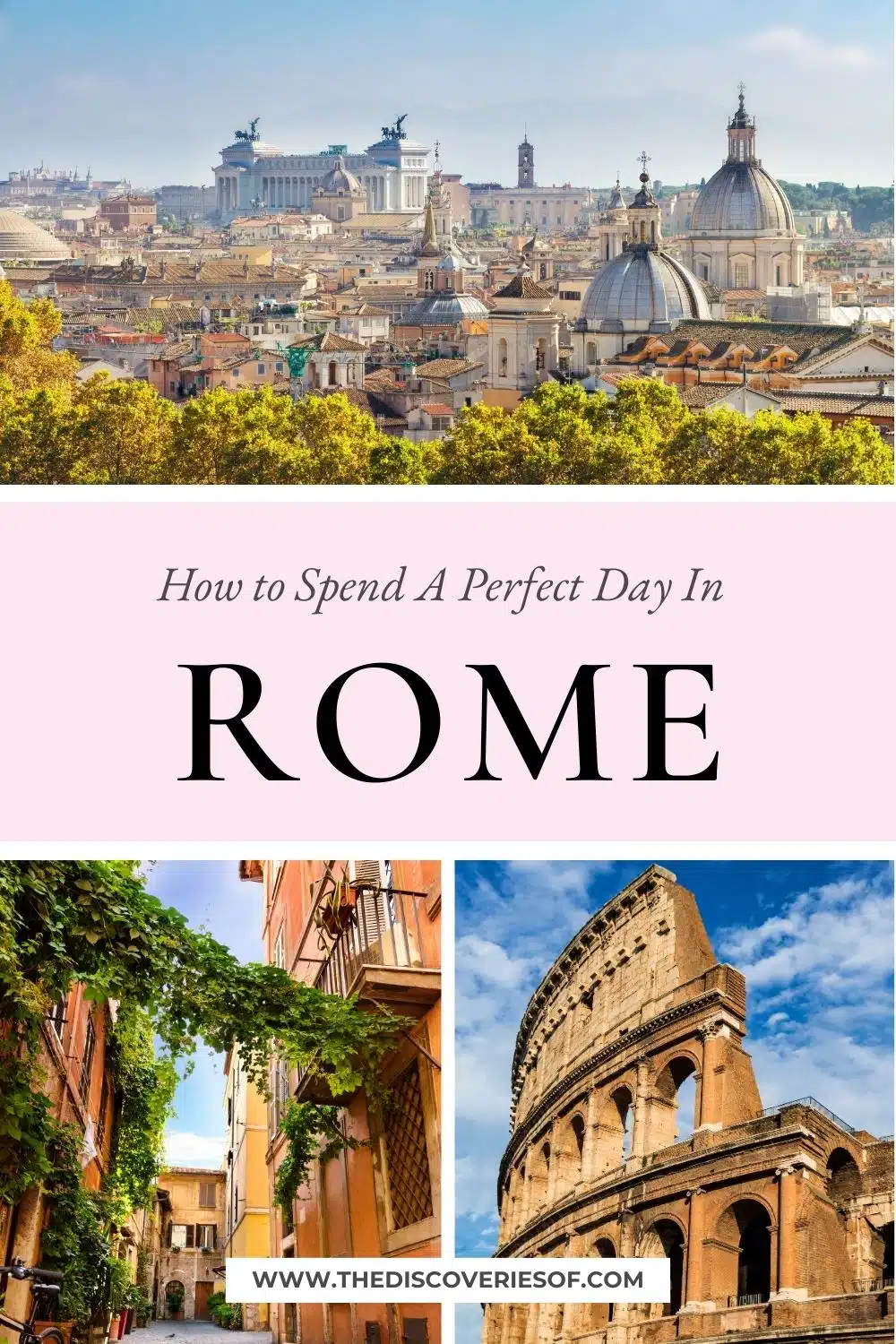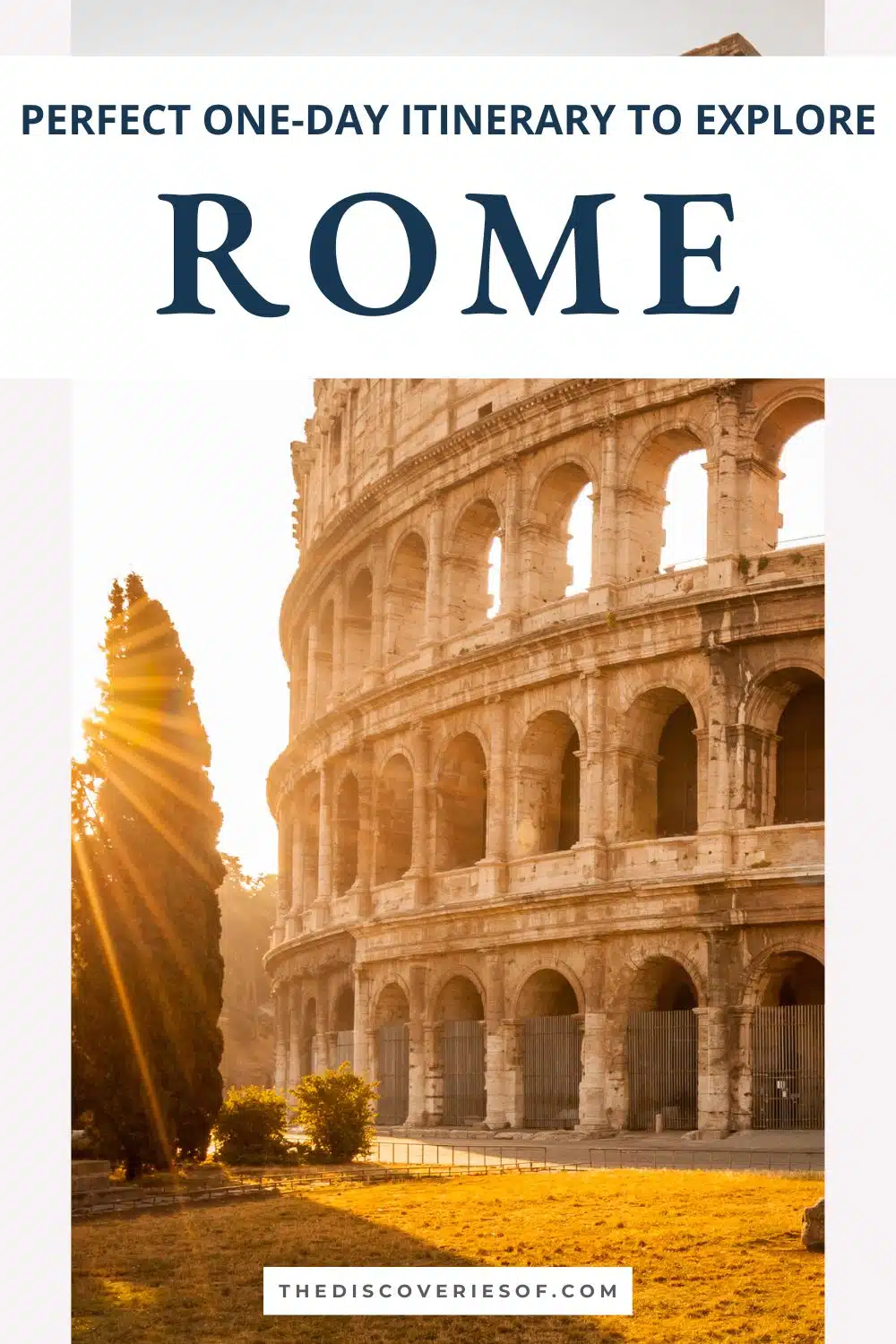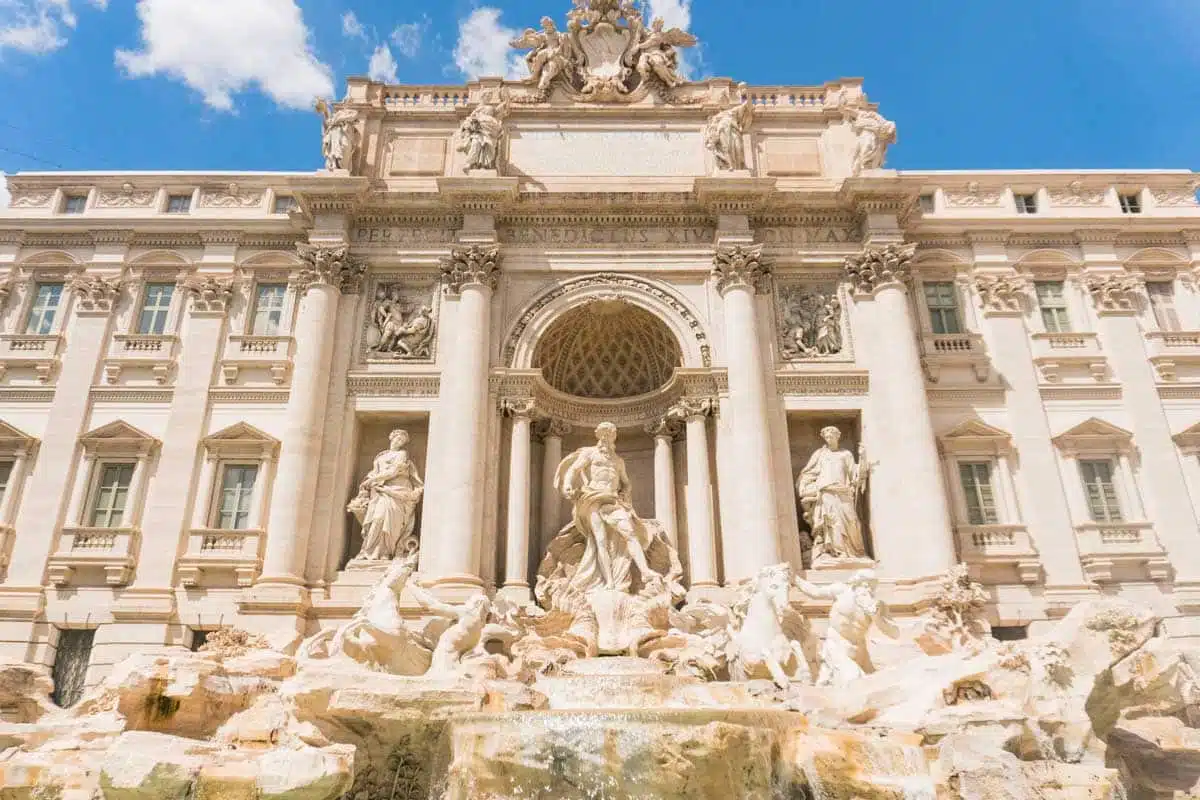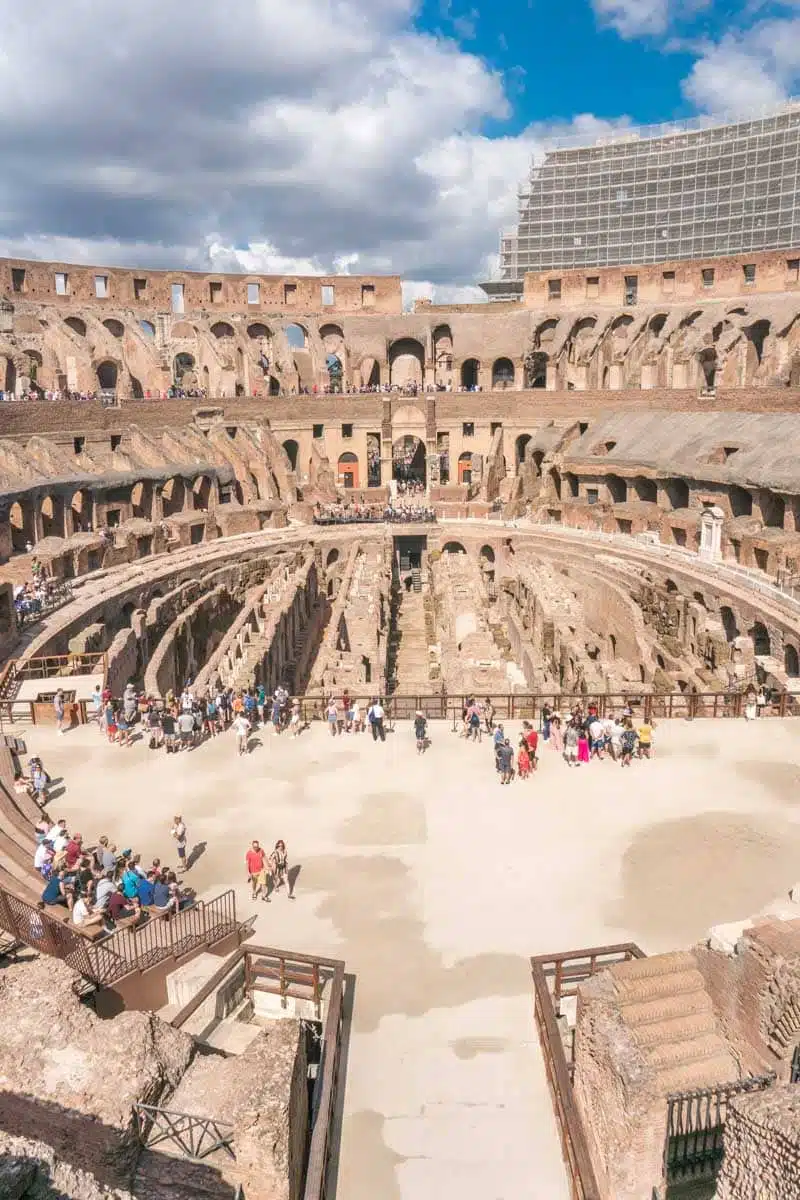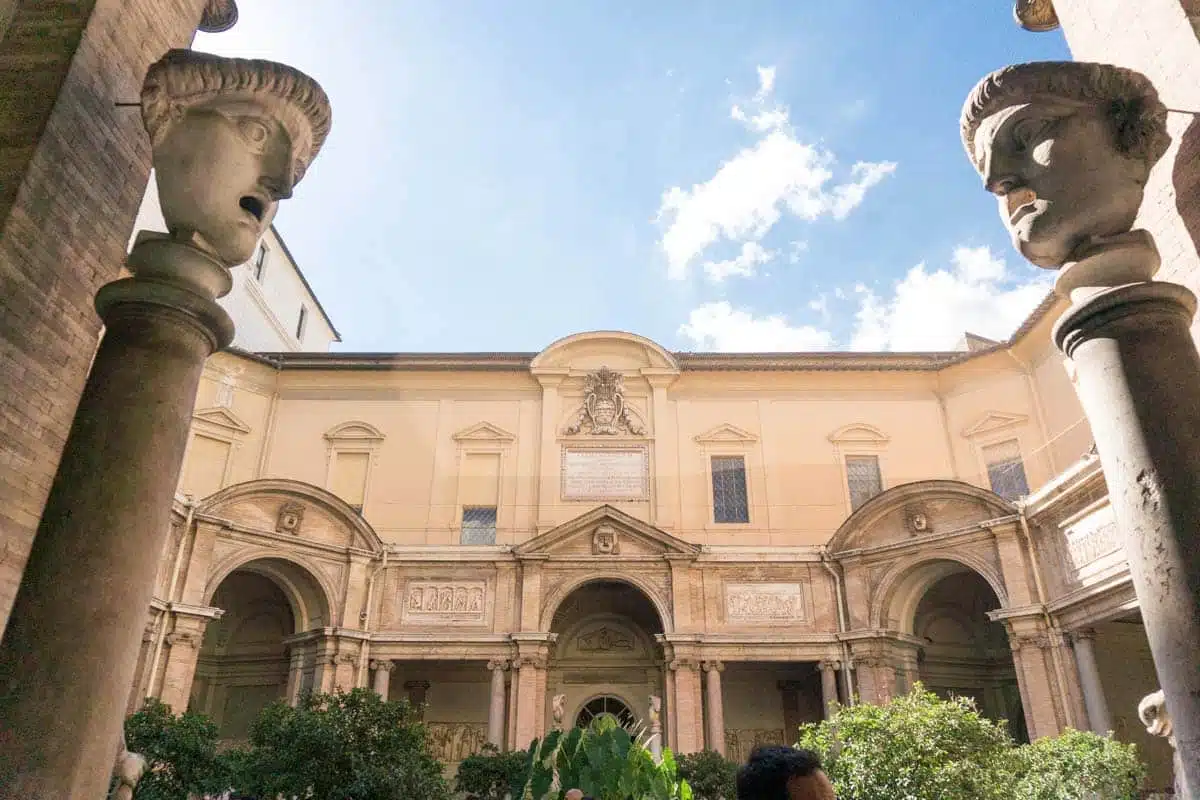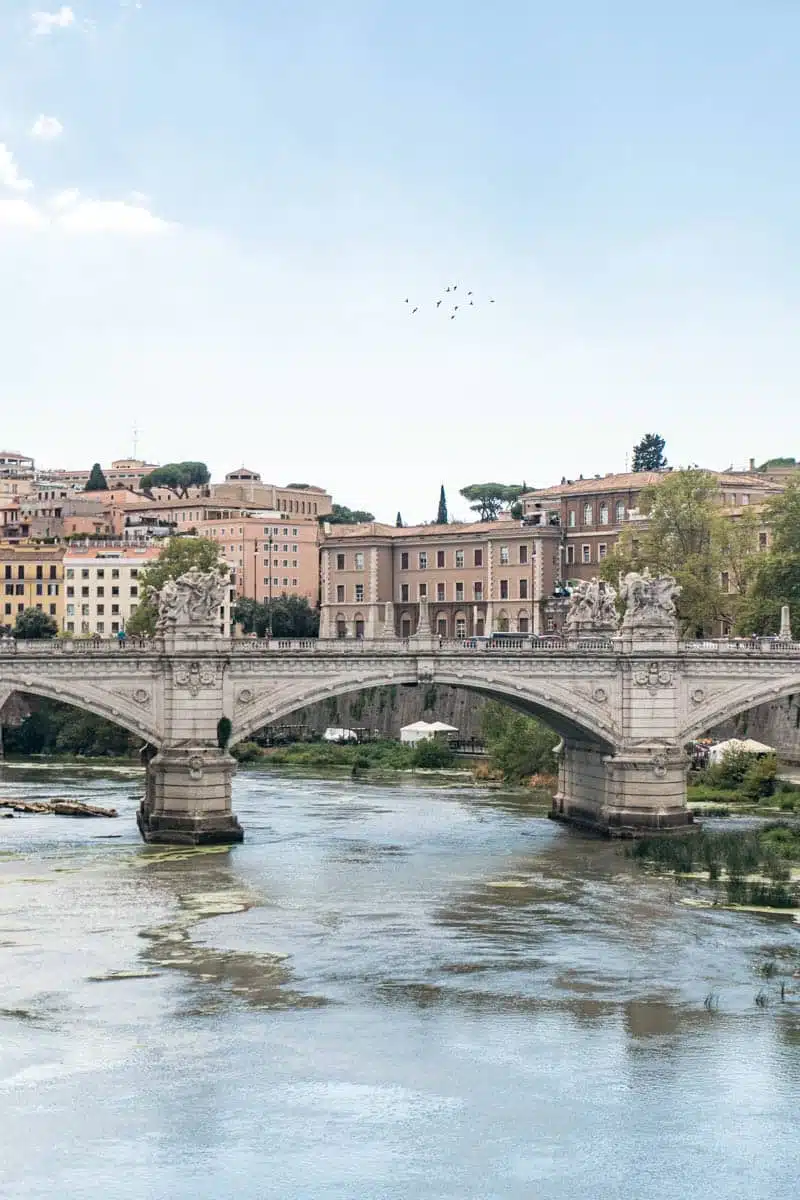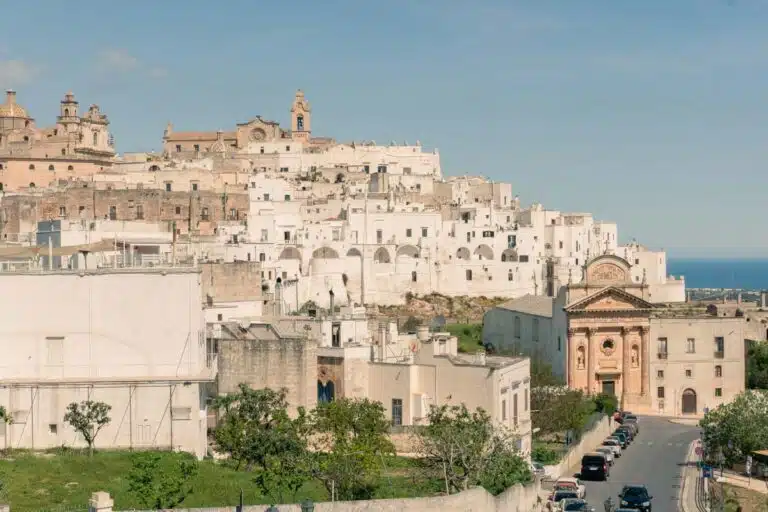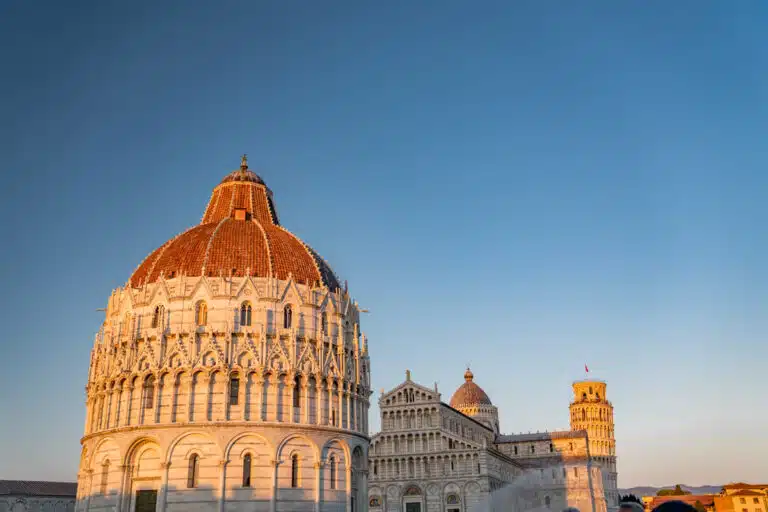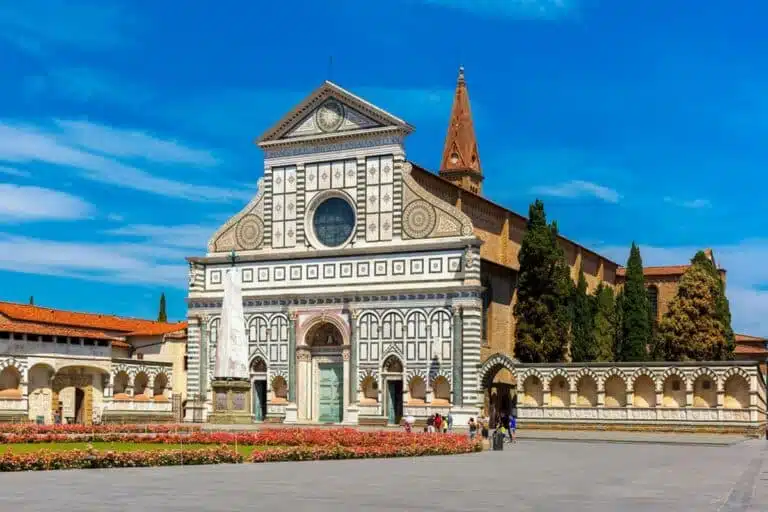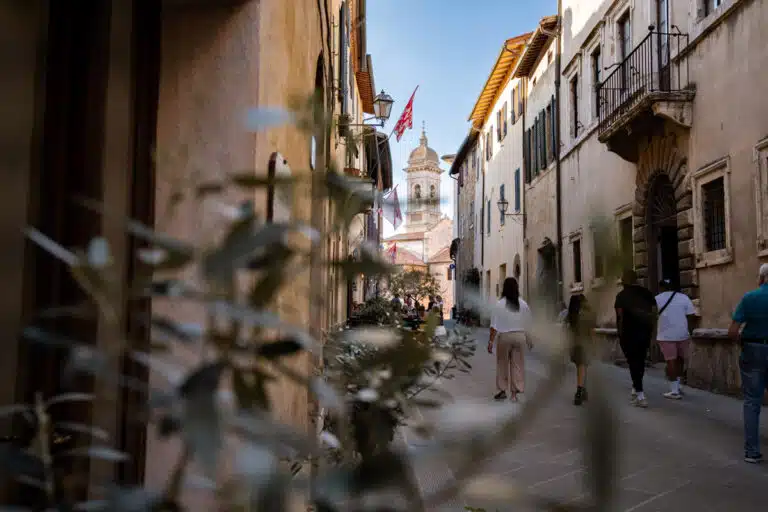Rome might not have been built in a day, as the old adage is so fond of reminding you, but it certainly is possible to see the best of the city in a short time. This one-day Rome itinerary will see you conquer the eternal city’s must-see spots.
I’ve got to be straight with you – seeing the best of Rome in a day isn’t going to be the easiest task. You’re going to have to be ruthless in cutting things out of your itinerary, instead beaming your laser focus on a handful of sights.
It might sound challenging, but it’s not. I’ve been in your shoes. The first time I visited Rome, I had one day between flights to explore the city and you know what? I rocked it.
I put on a comfy pair of trainers, slapped on some sunscreen, packed my water bottle and my pre-marked Google Map (I’ve got one you can save to your phone at the end of this article) and set off to see Rome’s charms.
Now it’s time to help you do the same. From the glories of the mighty Colosseum to the splendour of the Vatican City, get ready for an action-packed day in Rome.
One Day in Rome Itinerary
Let’s jump in.
I suggest getting as early a start to your day as possible.
As the Colosseum only opens at 8:30 am, try and get a light breakfast in your hotel or at La Licata, a trendy cafe that’s only an 8-minute walk away. The cafe opens early, so you can have a relaxing early morning breakfast before the start of a busy day.
8:30am – The Colosseum and Arch of Constantine
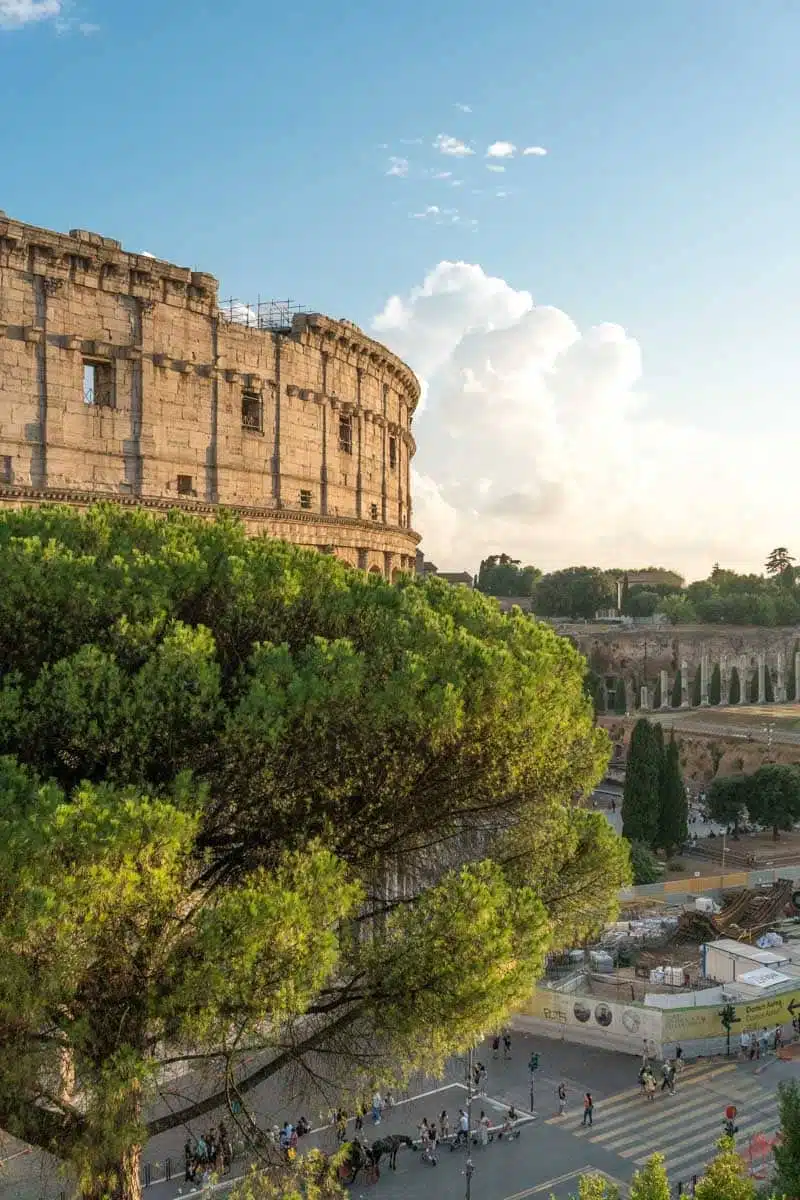
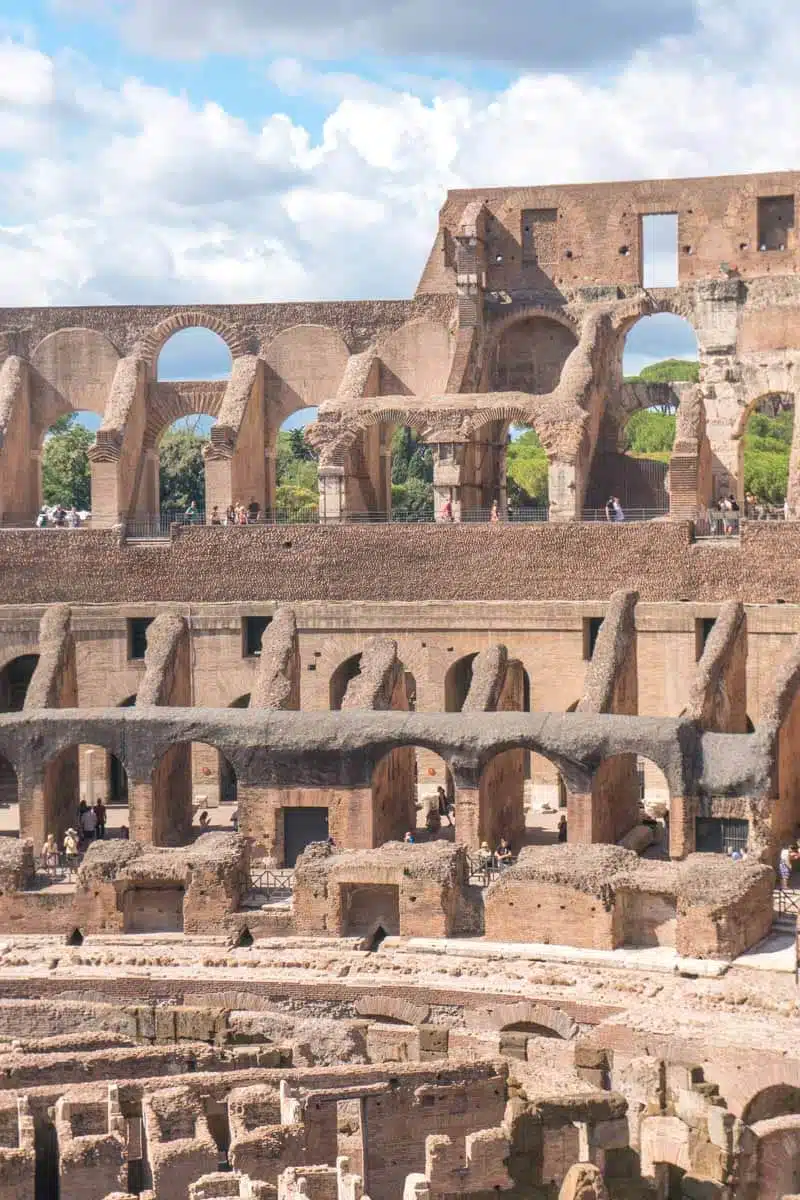
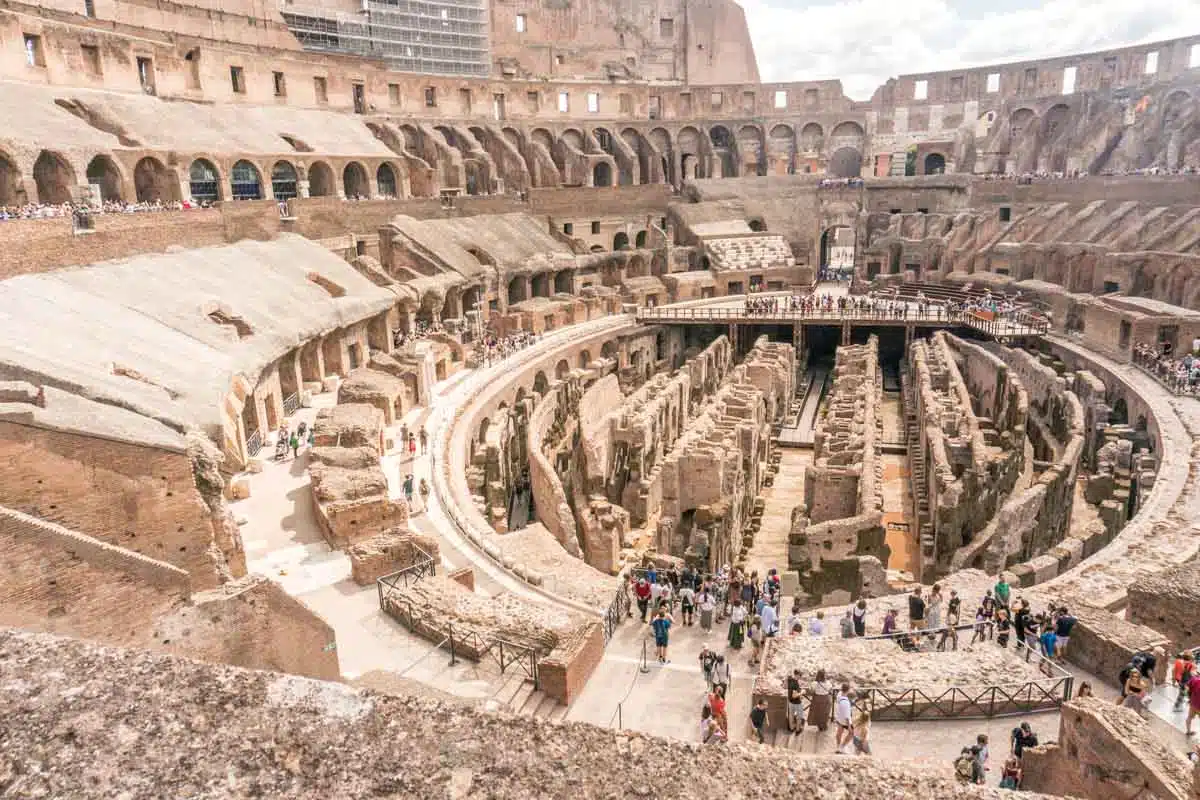
The Colosseum needs no introduction – is there anywhere more epic to kick off your day in Rome? I certainly don’t think so.
Built between 72 A.D. and 80 A.D. by Emperor Vespasian, The Colosseum is one of Rome’s most iconic landmarks and a must-visit for anyone spending even the shortest amount of time in the city.
Originally known as the Flavian Amphitheatre, it could hold between 50,000 and 80,000 spectators (which is pretty much the same as modern sports stadiums!) – but what was it used for? We all know about the gladiatorial combats – but the Colosseum was also used for wild animal fights and even mock naval battles.
Who said those Ancient Romans didn’t know how to keep themselves entertained?
Ensure you take the time to explore the Colosseum’s Hypogeum, the underground tunnels where the prisoners and animals would stay before engaging in battle. The tunnels were something of an engineering feat at the time, complete with cleverly-constructed elevators and pulley systems to hoist beasts into the arena.
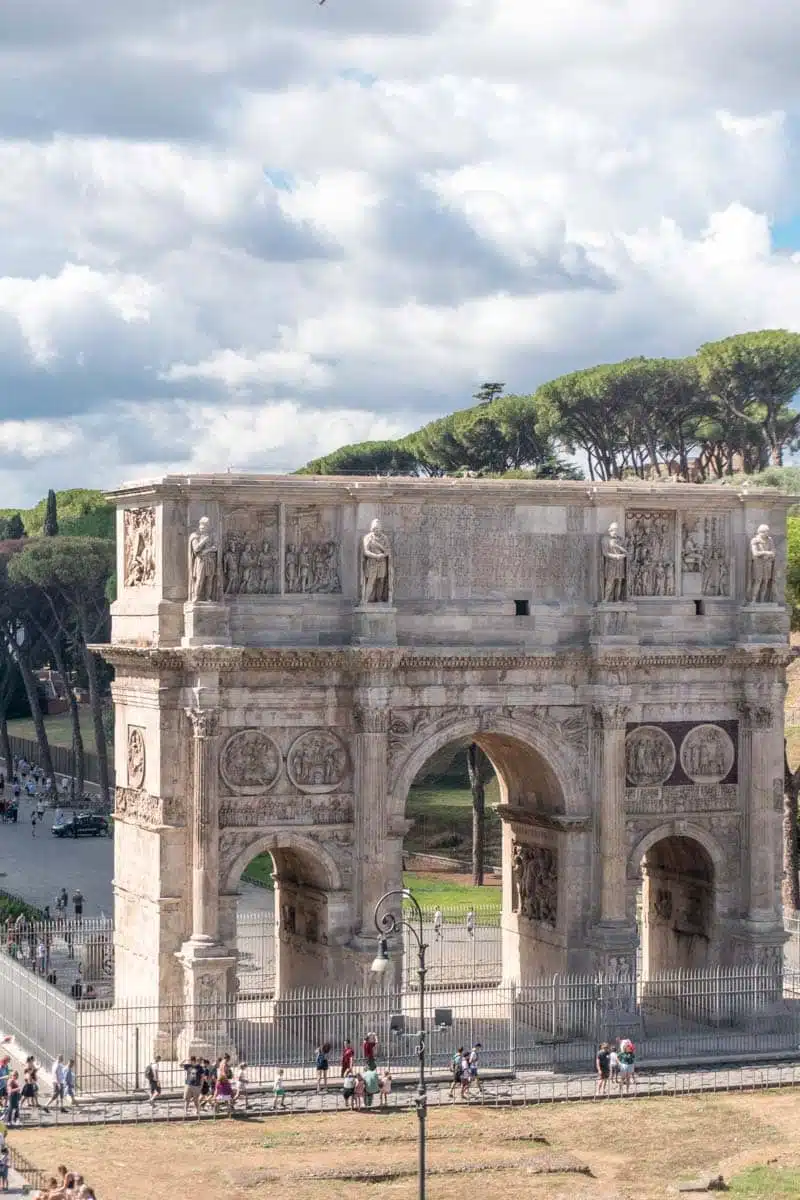
After you’re finished with the Colosseum, admire the Arch of Constantine, which represents the success of Constantine in the Battle of Milvian Bridge in 312 AD and is said to be the last great monument of Imperial Rome.
While many people just breeze by, perhaps taking a quick snap, if you stop and look closer you’ll see that it’s actually a patchwork of history – with parts pulled from earlier monuments of emperors like Trajan, Hadrian and Marcus Aurelius.
Do
You need to book tickets in advance for the Colosseum, or you can book onto a guided tour to help you learn more about the fascinating history of this enduring structure. 24 hour tickets for The Colosseum also include entry to the Forum and Palatine Hill – the next stops on this itinerary.
9:30am – Forum and Palatine Hill
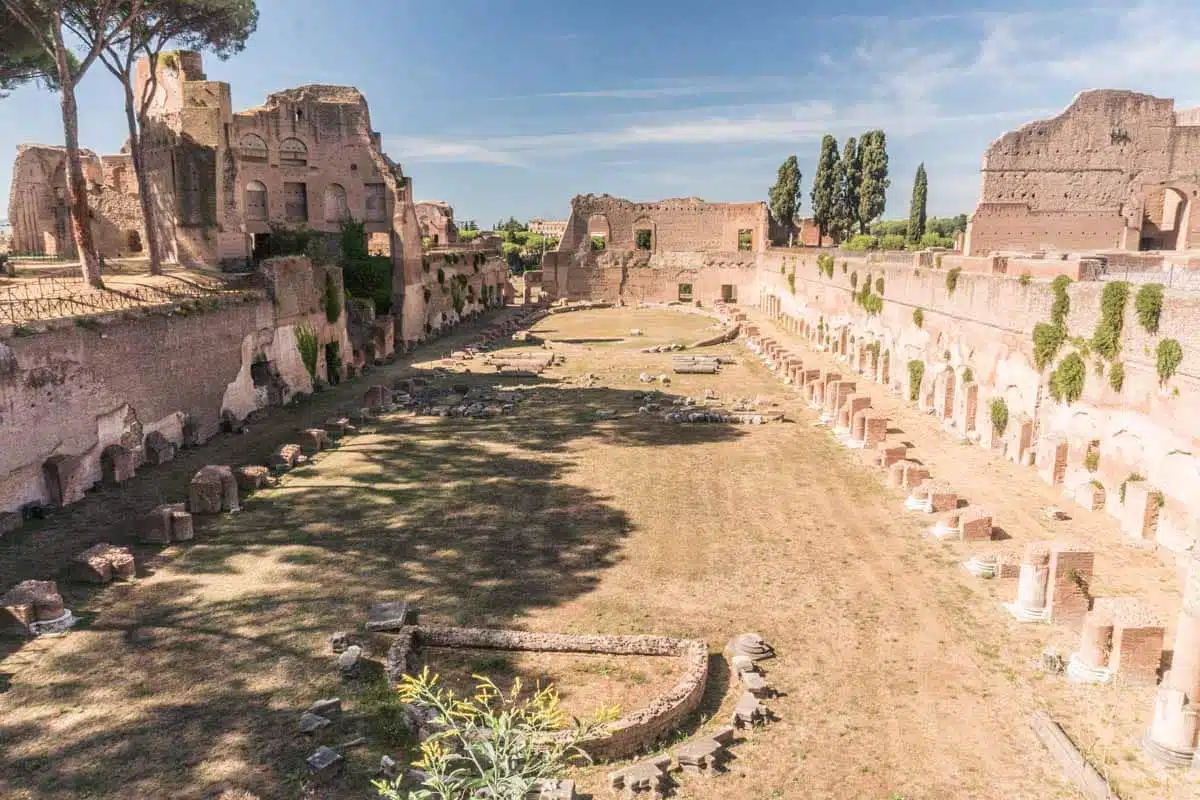
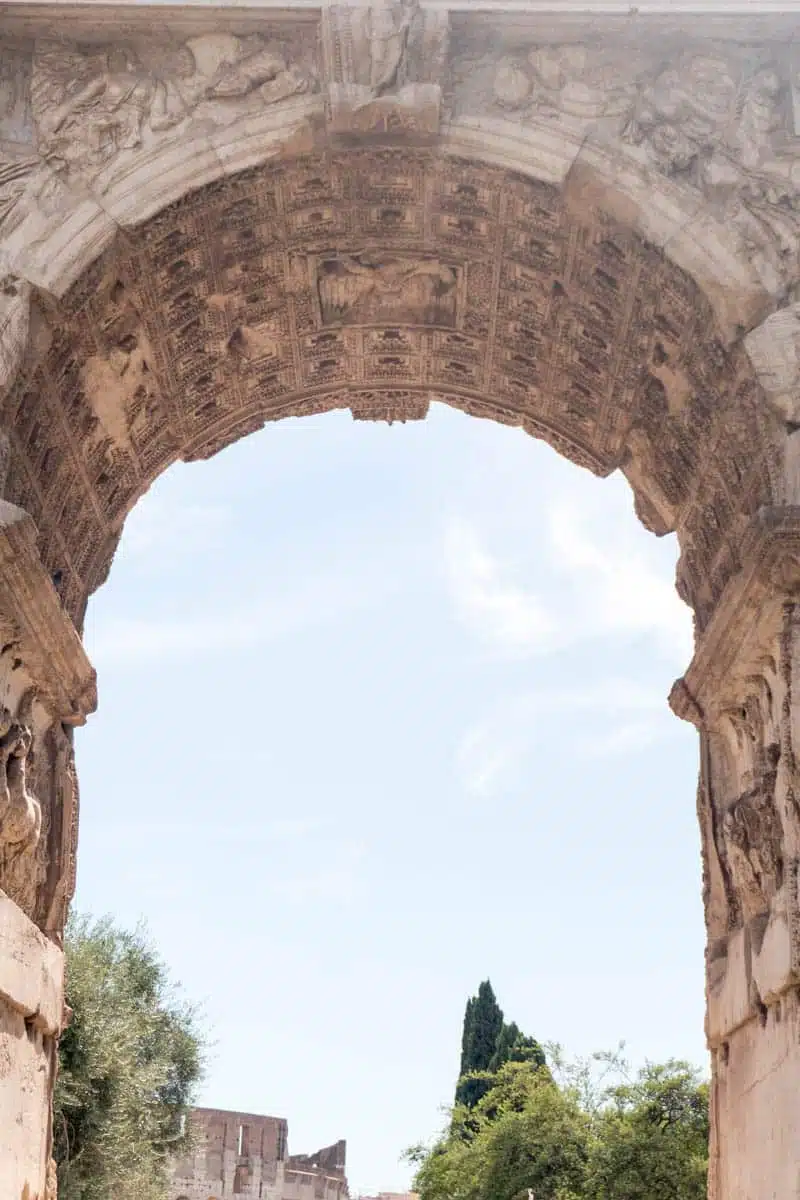
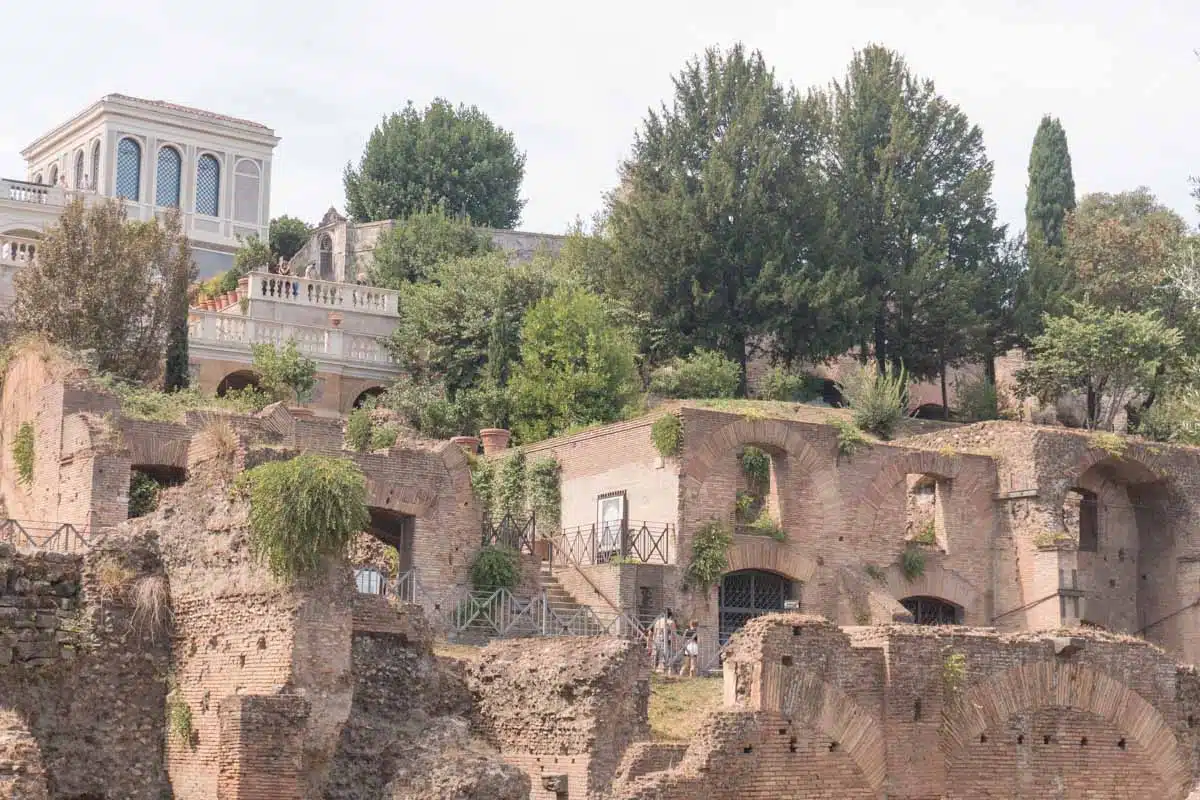
Just a short hop from the Colosseum and the Arch of Constantine, The Forum and Palatine Hill are the next stops on today’s itinerary.
Together, they were the heartbeats of ancient Rome, the focal point for its political, religious and social activities.
The Forum sat at the heart of Roman life. Built on an area that was drained in the 6th century BC, it was occupied by markets and gradually became the meeting place for popular assemblies and courts of law.
Caesar planned the extension of the Forum, plans that were carried out under Augustus, who restored many of the buildings of the Republic, complementing them with a host of new buildings and statues.
This period was really the Forum’s zenith, a time when it gleamed in marble and bronze before it started to be dismantled to build churches and other buildings from the 6th century onwards.
The Via Sacra – the main street of ancient Rome, runs through the Forum – follow its footsteps to reach the top of Palatine Hill, the most central of Rome’s seven hills and supposedly the site where Romulus founded the city in 753BC.
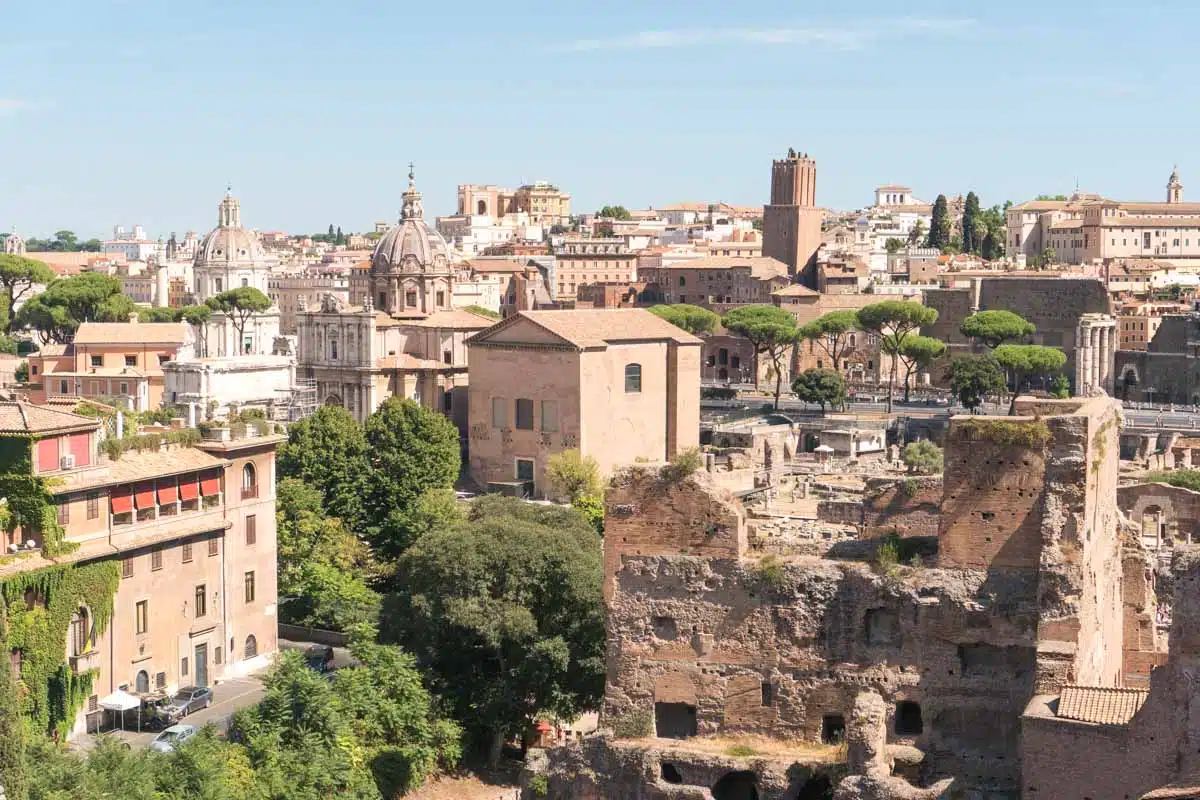
Whether that’s true or not, it’s certainly where subsequent emperors built their palaces – including Augustus, who built the Palatium, the building that gave its name to all later palaces.
Spend time exploring the ruins of those palaces and taking in the magnificent views of the city – but time is the essence peeps so we’re going to have to move on to our next destination.
Do
Opening hours vary through the year, although it’s generally from 8.30am until one hour before sunset. Buy a combined ticket for the Colosseum, Forum and Palatine Hill – alternatively book onto a tour for the Forum and Palatine Hill.
11am – Piazza Navona
Alright, by this stage, it will be somewhere around 11 am, and there are still a couple of sights we still want to see before (a well-deserved) lunch.
Take a short 15-minute walk (1.3km) to Piazza Navona— one of Rome’s most beautiful open spaces.
The Piazza Navona was first a sporting stadium built by Emperor Domitian in 86 AD, which is the reason for its elongated shape. It was transformed into the piazza you see today in the 17th century.
Today, Piazza Navona has three glorious fountains: Fontana del Moro, Fontana dei Quattro Fiumi and Fontana di Nettuno. The centre one – the Fontana dei Quattro Fiumi or the Fountain of the Four Rivers is the one to pay attention to – with magnificent figures representing the rivers Danube, Nile, Ganges and Plate, along with an ancient obelisk towering from its centre.
Top Tip
Head to the church of Santa Maria della Pace on the Piazza Navona and look above the first chapel on the right to see figures of the Sibyls painted by none other by Raphael.
12pm – Pantheon
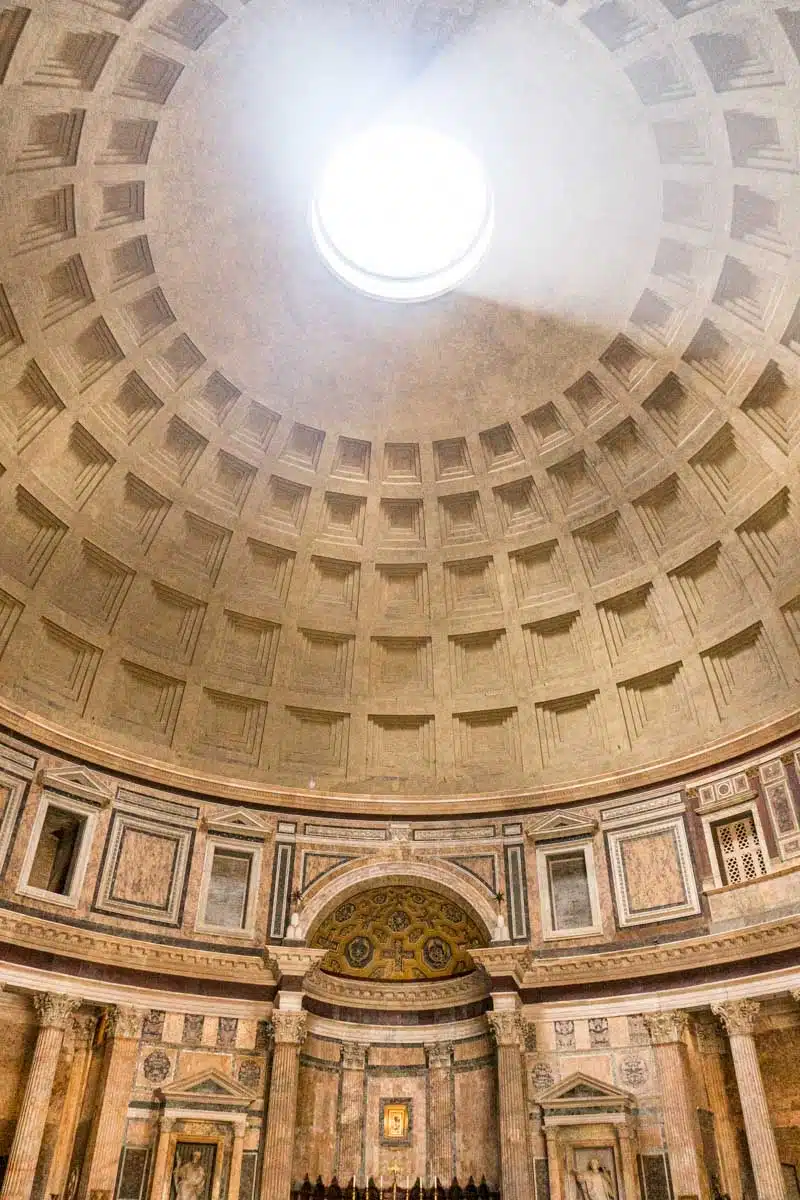
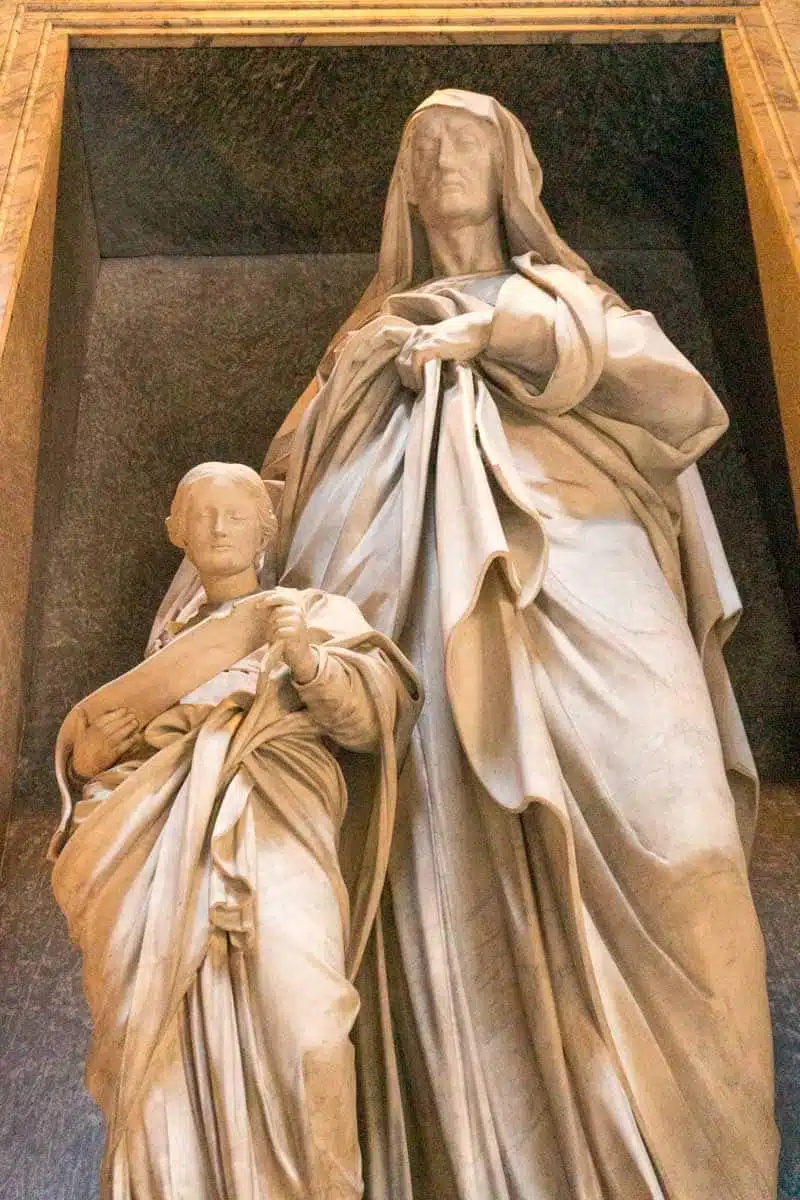
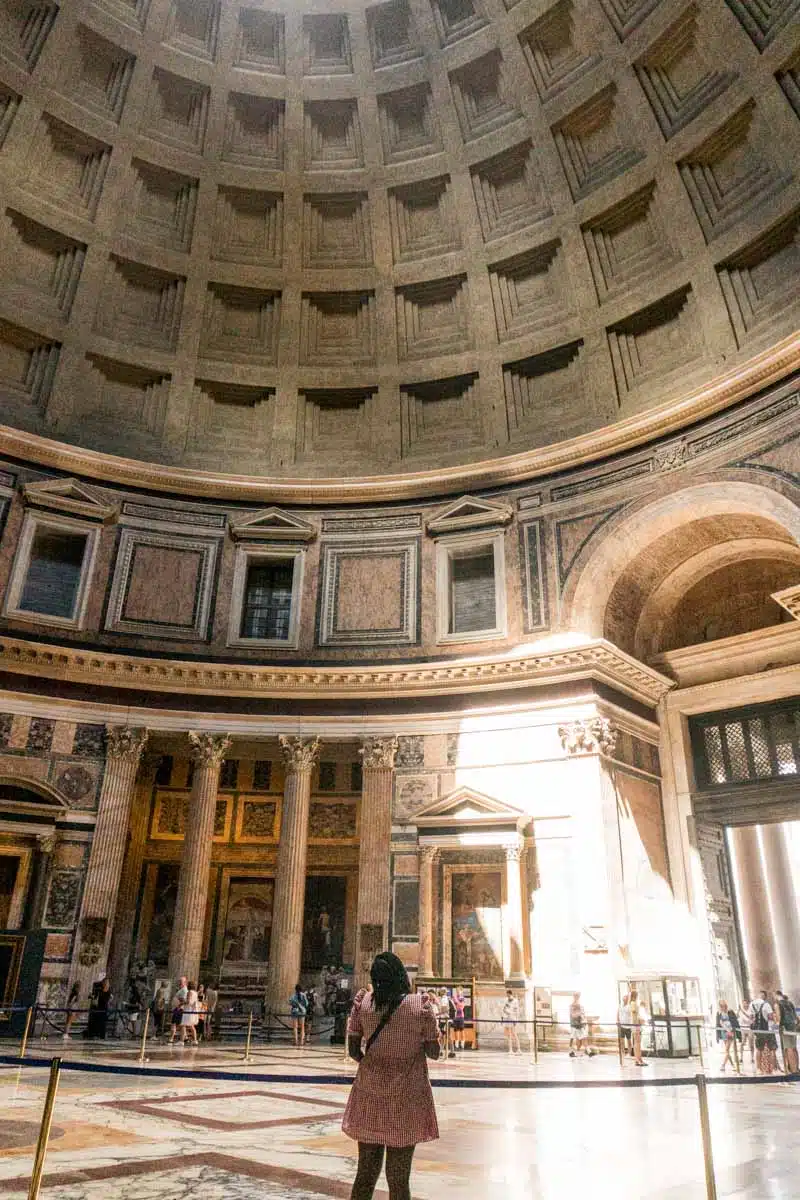
Next on our itinerary, it’s time to take a 5-minute walk (300 metres) to the Pantheon, the best-preserved building from Ancient Rome.
Previously created as a temple to the Gods, the Pantheon is now an architectural wonder with the largest unreinforced concrete dome in the world. Measuring 43.2 metres high and with the same diameter, the dome is one of the marvels of the ancient city.
It was originally built in 27 BC by Marcus Agrippa and then later rebuilt by Emperor Hadrian in 120-126 AD. When paganism was banned, the Emperor Phocas presented it to the Catholic church who consecrated it in 609 as the church of Santa Maria ad Martyres – more popularly called Santa Maria Rotunda.
Aside from mesmerising architecture, you can visit the tombs of famous Italian poets, kings and the Renaissance artist Raphael. Gaze up at the Pantheon’s oculus, which lights the large hall and serves as a sundial.
I recommend spending between half an hour and 45 minutes at this architectural masterpiece before having lunch.
Do
Although you can buy tickets on the day for the Pantheon, tickets do sell out in advance, so it’s not recommended. Buy your timed ticket online or book a guided tour with skip the line entry.
12:30pm – Lunch at L’Antica Birreria Peroni
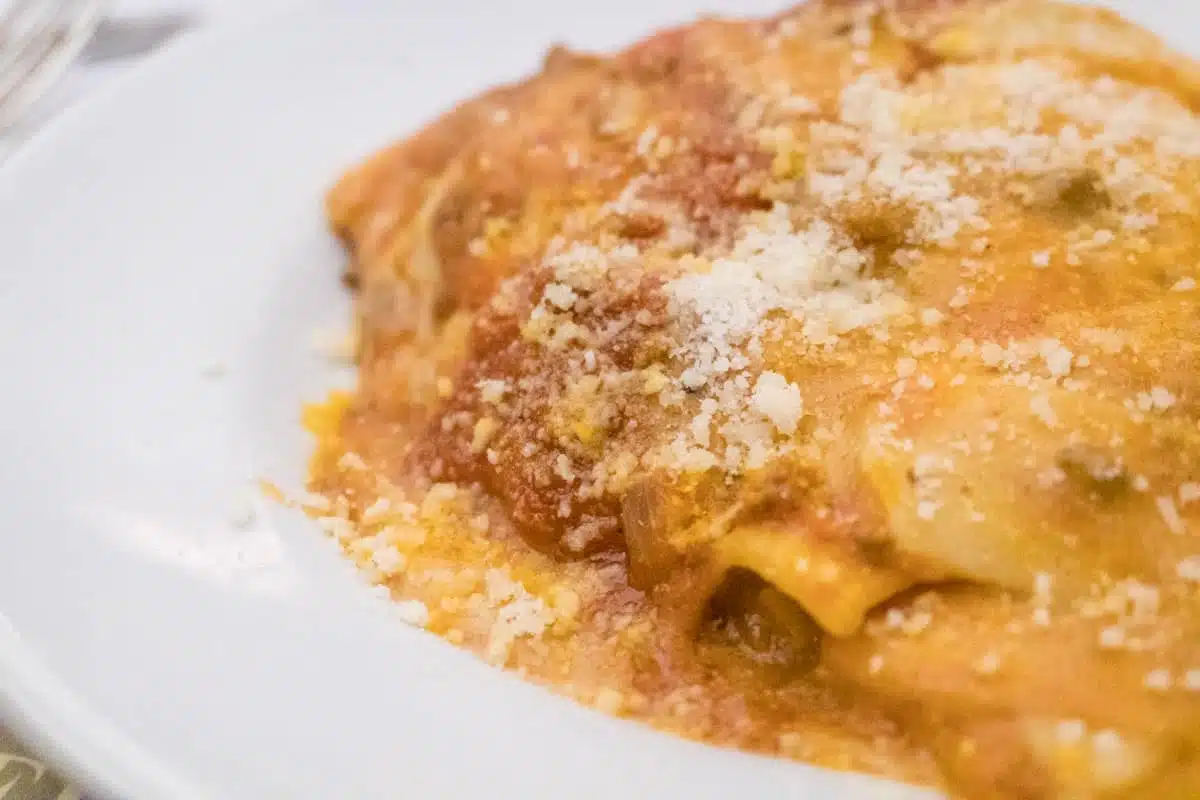
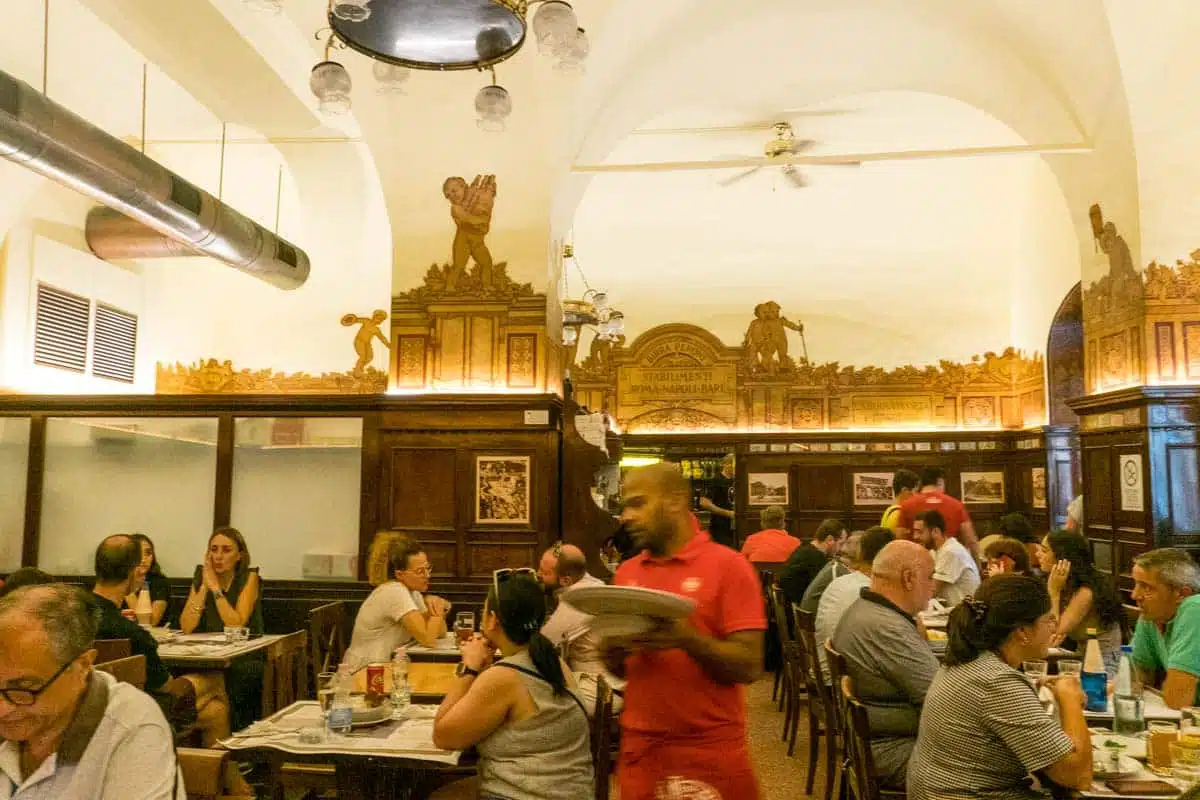
Hooray! You’ve made it to lunch – it’s time to give your feet a bit of a break and to fuel up on some authentic Roman cuisine.
L’Antica Bierra Peroni was actually recommended to me by a friend who grew up in Rome (thanks Arianna) and it over delivered – honestly, I can’t recommend it enough. Although it’s central and was busy, we were pretty much the only tourists in the cavernous dining hall which used to be first a post office and then a church.
The setting is fabulous – with religious relief sculptures all over the walls and mahogany tables where you feast on traditional dishes, washed down with a Peroni beer or two.
1:30pm – Trevi Fountain
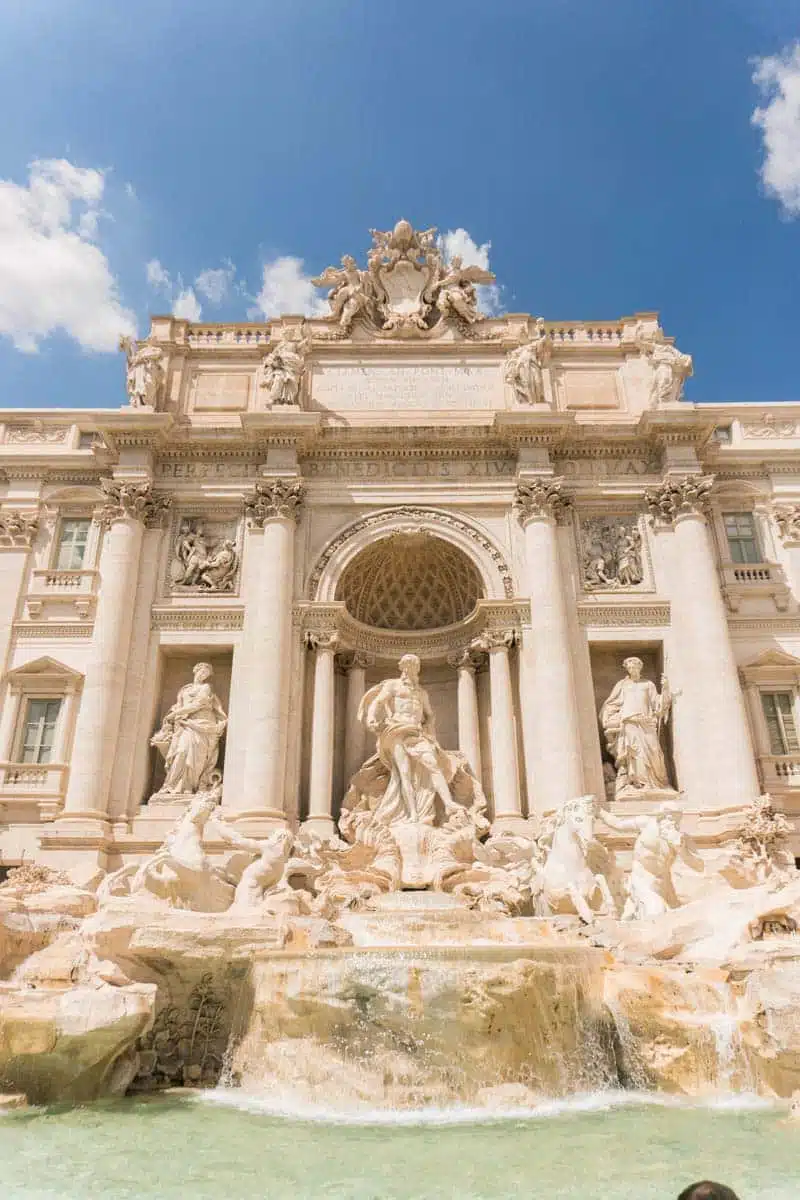
I’ll be honest – visiting the Trevi Fountain at 1.30pm is a known entity. It will be packed, there will be millions of people trying to get that extra-special photo with a thousand strangers in the background doing exactly the same thing – but what can we do? Short of starting your day in Rome at 6am (I mean, if you want to, you certainly can), it’s just the way it is.
That aside, the Trevi Fountain is the most beautiful fountain in Rome – a baroque masterpiece by Niccolo Salvi based on designs by Bernini.
The sculptures that ordain this fountain depict Neptune, the God of the Sea, riding a chariot pulled by two horses. Each horse represents the calm and rough nature of the ocean and depicts Neptune’s battle to tame the Sea. Health and Fertility sit on either side of Neptune.
Top Tip
As the fountain will be busy, I recommend keeping your time here relatively short.
1:45pm – Spanish Steps
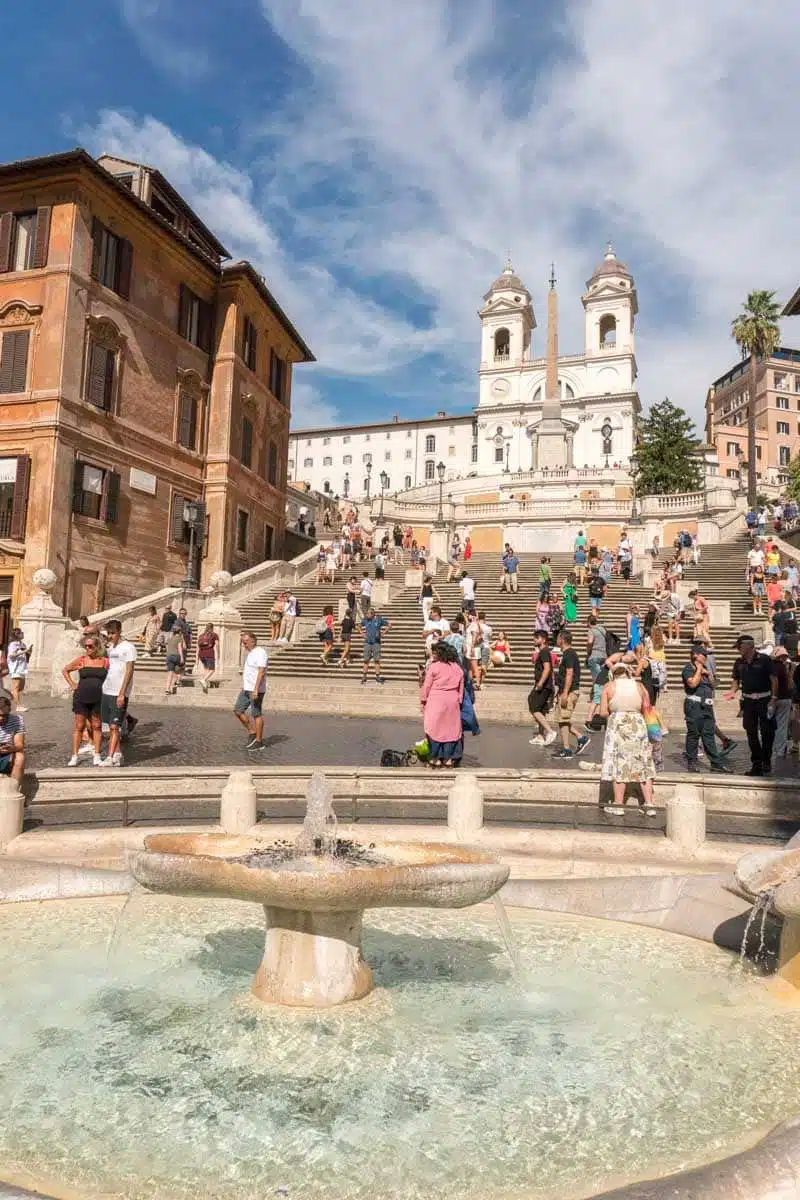
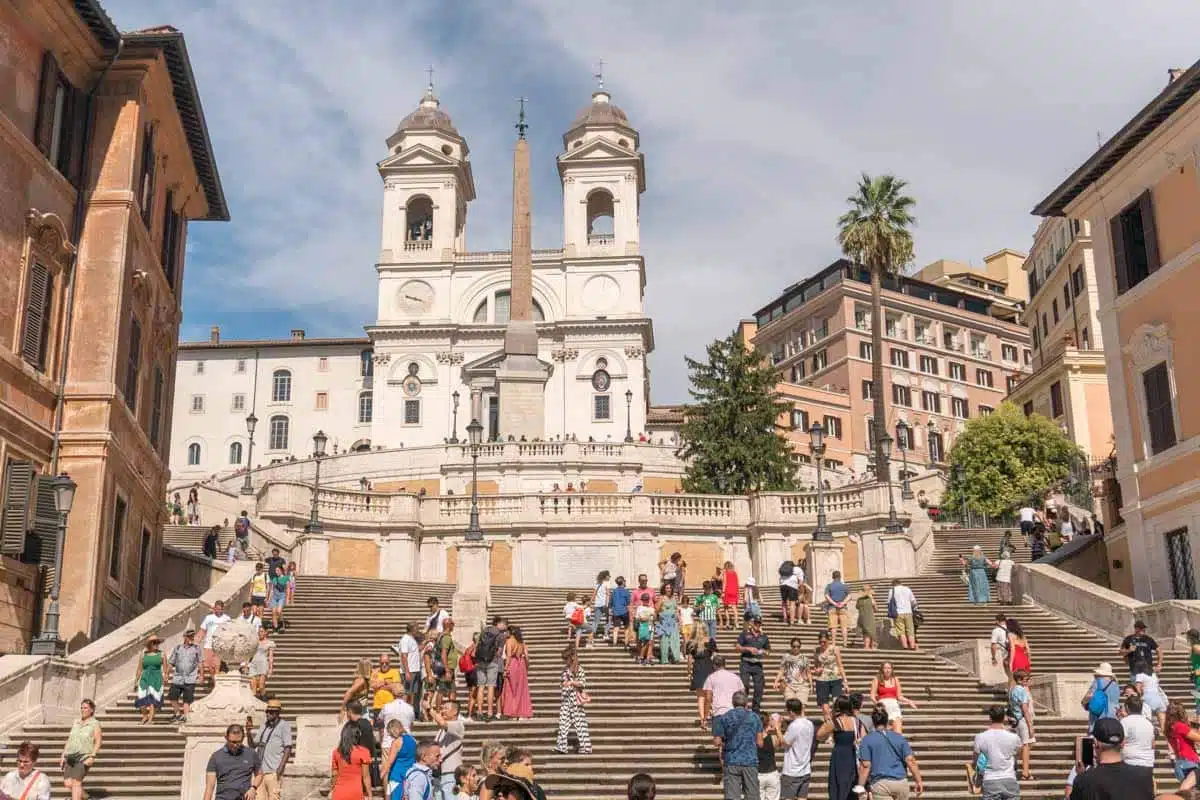
After a brief 8-minute walk (650-metres) from Trevi Fountain, it’s time to visit another of the city’s most famous sights, The Spanish Steps.
The 137 travertine steps connect the Piazza di Spagna to the Trinità del Monti Church. They were designed by Francesco de Sanctis and Alessandro Specchi in the 1720s, they were built to connect the Spanish embassy (hence the name) and the church above.
The baroque steps have played their part in literary and cinematic history – they were a favourite haunt for John Keats (who lived and died in a house next to them) and were also immortalised in films like Roman Holiday.
Top Tip
It’s illegal to sit on the Spanish Steps, and you can face a fine of up to 400 euros if caught.
2pm – Castel Sant’Angelo
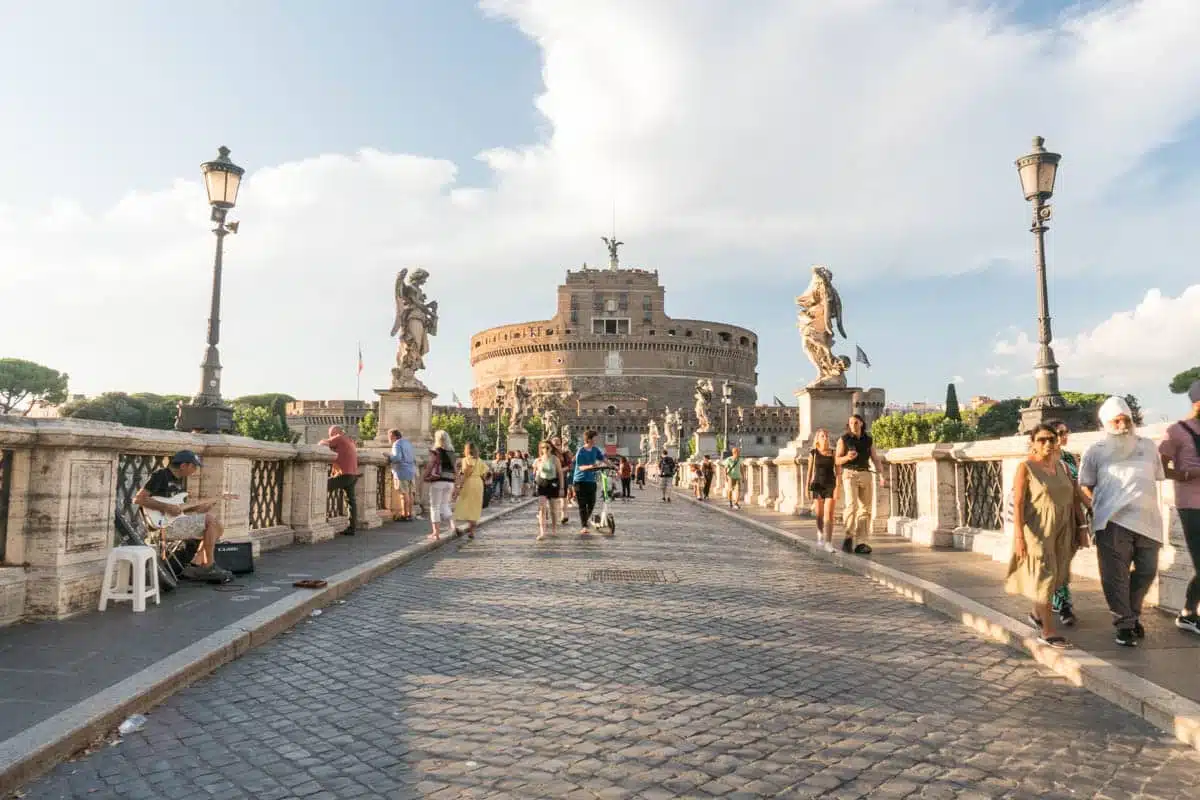
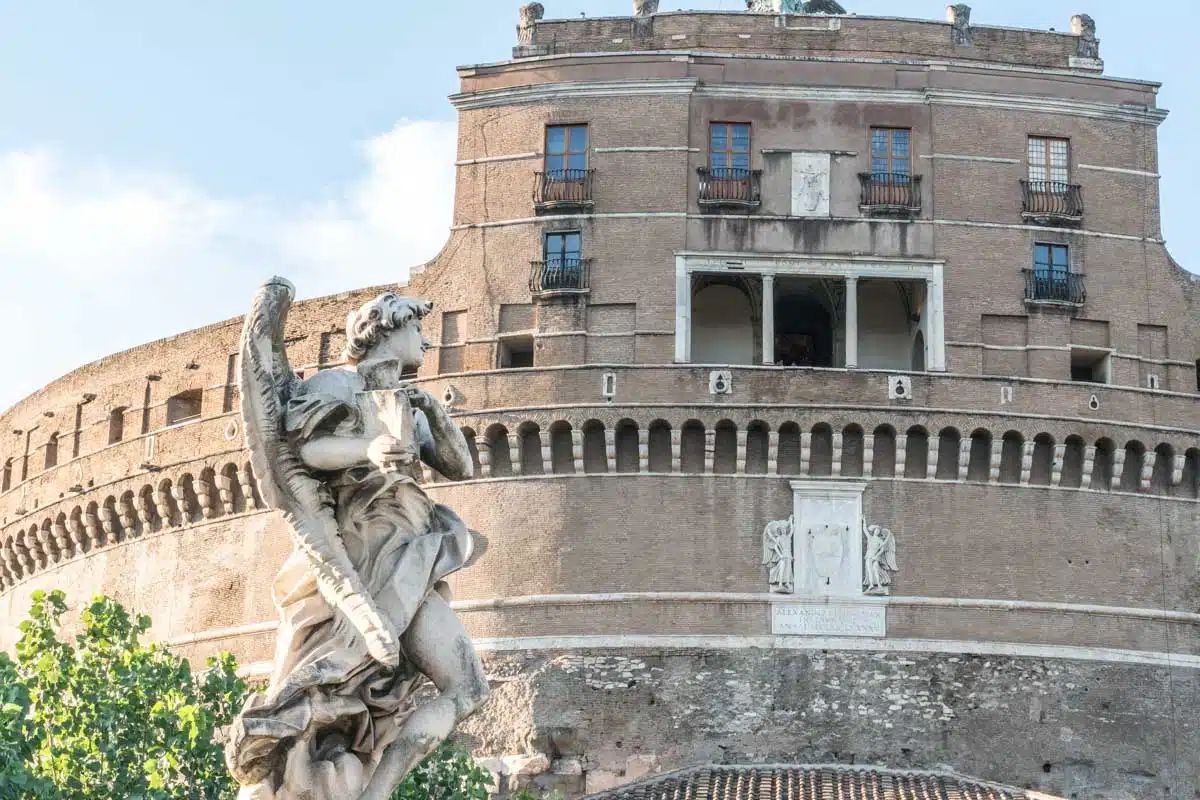
Our next stop, Castel Sant Angelo is a little further – crossing the River Tiber on a 1.5km walk or in a taxi for a 10-minute drive.
Rising above the right bank of the Tiber, Castel St Angelo was built by Hadrian in 130 AD as a mausoleum for himself and his successors (humble much?). From the 6th century onwards, it was used by the rulers of Rome as a fortress before being gifted to the popes to use as a refuge in times of danger.
These days, it’s a museum with an impressive seven stories of exhibits, including the beautiful fresco paintings of Cupid and Psyche.
If you decide to go into the building, I recommend spending no more than an hour. Book skip-the-line tickets to maximise the time you can spend in the museum itself.
Top Tip
There’s a secret passage – the Passetto di Borgo – leading from Castel Sant’ Angelo to the Vatican.
3pm – Vatican City
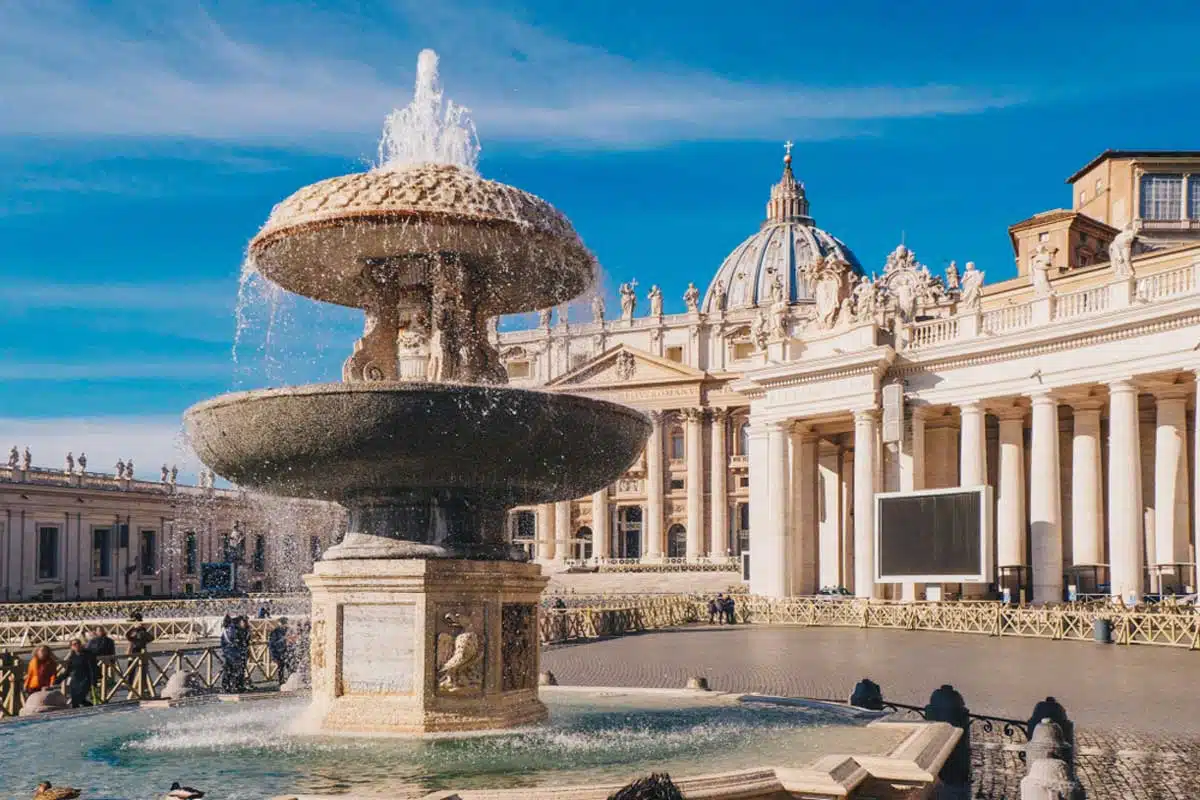
By this stage, it will be around 3 pm and just about time to fit in the last and possibly the most enthralling activity of the day.
You didn’t think I would forget the Vatican City, did you?
This independent city-state enclaved within Rome is located on the right bank of the Tiber and is a must for your time in Rome.
I thought long and hard about whether to include the Vatican City in a one day itinerary as it takes up so much time but, assuming this is your first time in the city, I would recommend taking the time to see it because, quite frankly, it is marvellous in the truest sense of the word.
The origins of the Vatican City date back to the time of Emperor Constantine the Great, who erected the Basilica over the tomb of St Peter.
That Basilica takes up the whole west side of St Peter’s Square. The current iteration was started in 1506 by Bramante in the rule of Pope Julius II and is shaped in the form of a cross and a large dome. Although Bramante started the work, a number of masters including Raphael, Antonio da Sangallo and Michaelangelo had a hand in designing it too. Michelangelo, for example, designed the mighty dome.
Famous as the Basilica is, the Vatican’s best-known treasure – the Sistine Chapel – is actually in the Vatican Museums next door.
We’ll get to the Sistine, but even without their crowning glory, the Vatican Museums are a fascinating (if somewhat OTT) visit – a treasure trove of art amassed by various popes throughout the centuries from the Renaissance onwards.
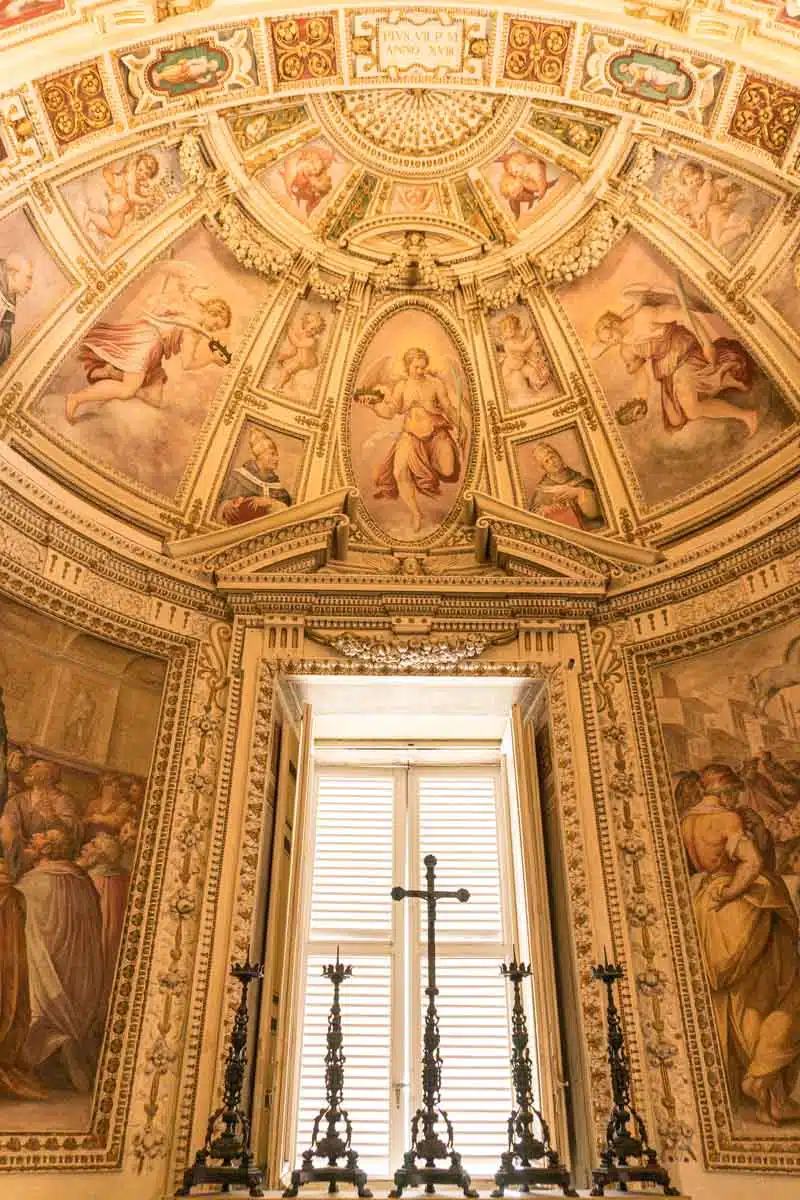
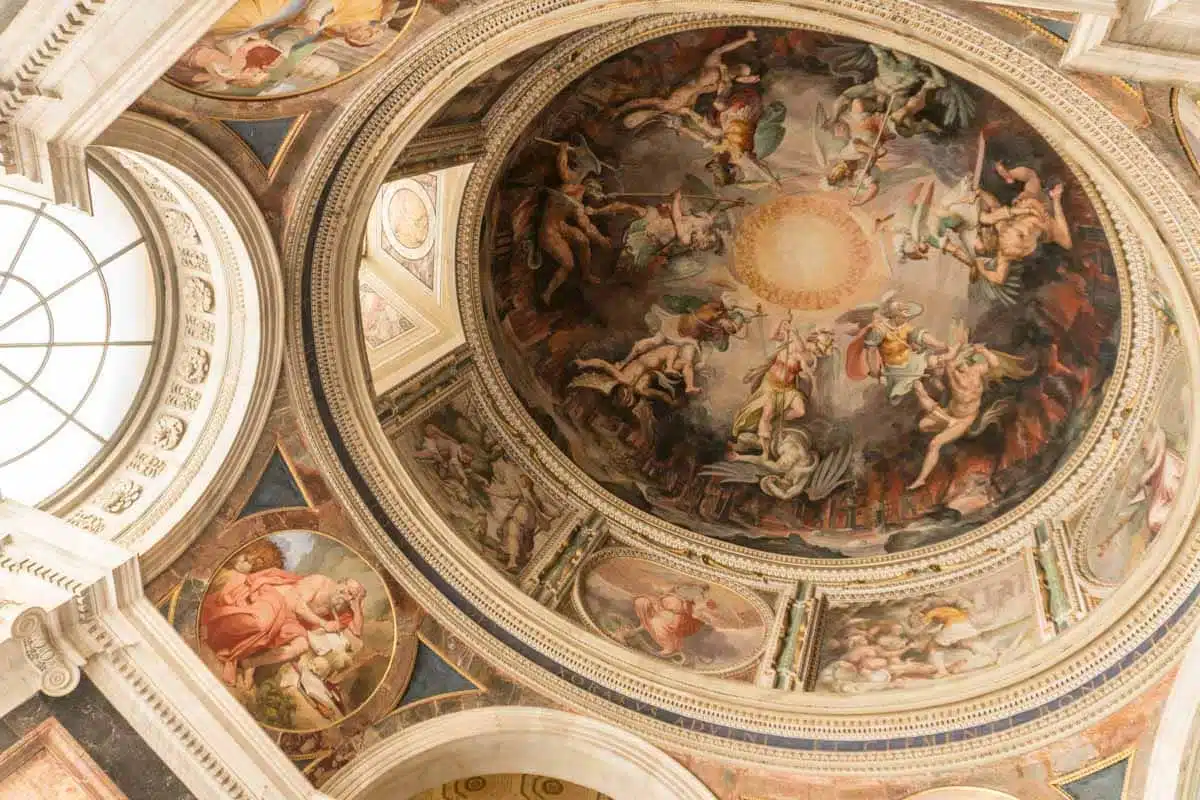
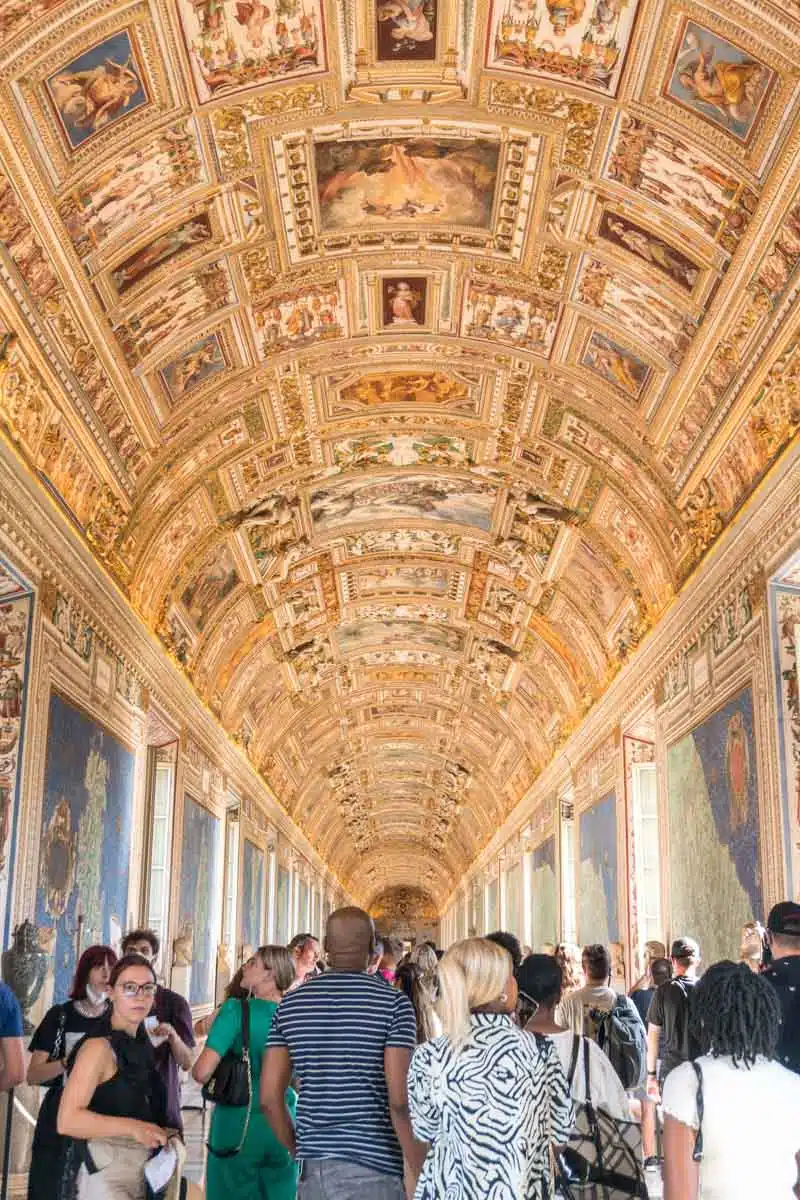
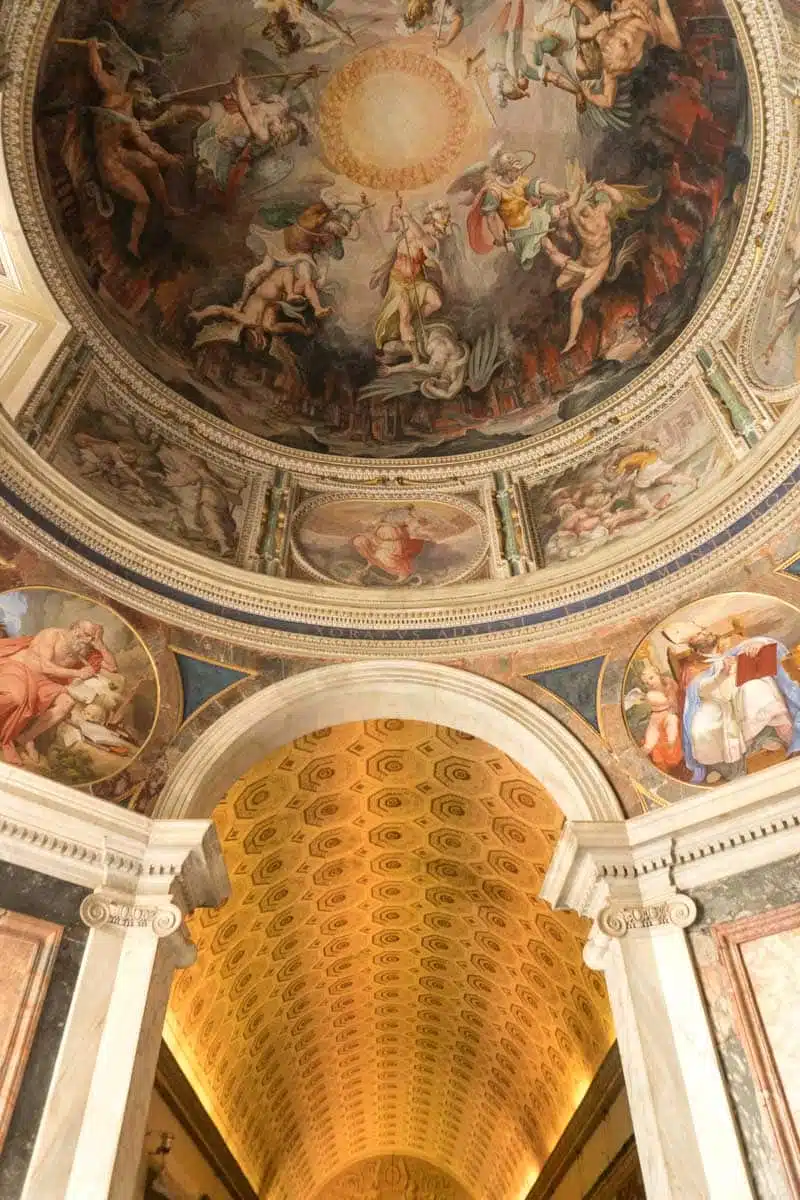
In an ideal world, you’d have at least a day to explore the Vatican City – with a significant chunk of that focused on the Vatican Museums. Instead, you’ll have to keep moving at a relative pace to get to the Sistine Chapel.
Before you do though, be sure to take the time to find the Room of Raphael though – a suite of three rooms and a larger halls decorated with paintings by the 25-year-old Raphael and his pupils – particular highlights include the Fire in the Borgo which shows the original facade of St Peter’s Church and the School of Athens which depicts an assembly of scholars with Plato and Aristotle in the middle.
OK, so now it’s time for the Sistine Chapel – whose fame lies with the magnificent frescoes painted by Perugino, Roselli, Boticelli and Ghirlandaio among others and that ceiling and altar wall by Michaelangelo.
The ceiling is constantly named as one of the most powerful works of art – telling the story of the Creation, the Fall and its consequences. It’s unlikely you’ll find enough space in the chapel to really soak it all in but do your best – it really is worth enduring the jostling and loudspeakered guards.
By contrast, the altar wall was painted by Michelangelo 30 years later – look closely and you can see more than 100 figures crowding for attention in the lively piece.
Do
I strongly advise booking skip-the-line tickets for the Vatican, either direct or through Get Your Guide otherwise you could easily spend the time you have to explore queueing to get in. You can also book onto a guided tour, but you’ll have to cut a few things from the itinerary to make room to do so.
7pm – Either Sundowners at Terrazza Les Etoiles or Dinner at Miraggio Ristorante Pizzeria
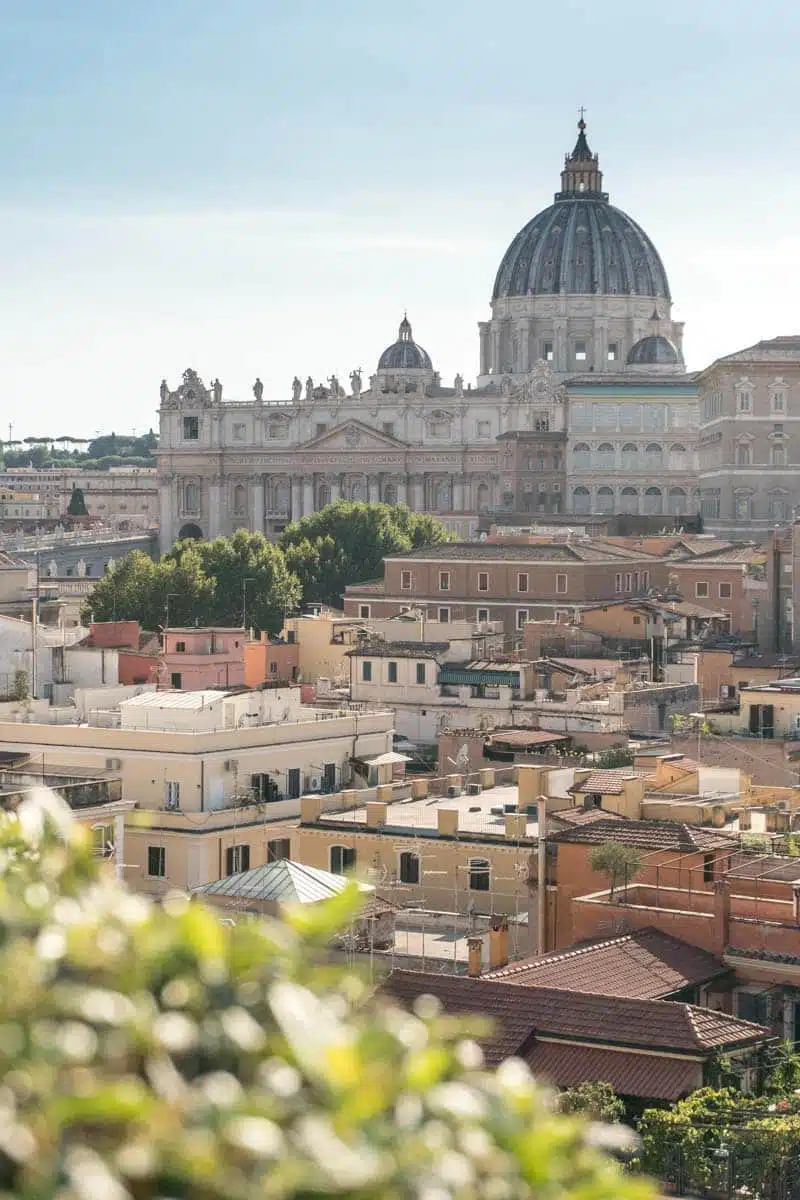
That’s it! You’re pretty much done. I’m going to give you two choices now – cocktails or pizza (well, if you’re feeling really lively you could do both, you total rebel).
If you’re going for cocktails, walk to the stunning Terrazza Les Etoiles, a rooftop bar with jaw-dropping views of St Peter’s dome and beyond. You’ll need to book ahead as tables go quickly, particularly around sunset. The cocktails and food are pretty good, but this bar really doubles down on the views (they are fabulous) so expect to pay a premium.
If you’re going for pizza, head to Miraggio Ristorante Pizzeria, another recommendation from my Roman friend that I wholeheartedly second.
It’s a bit of a walk from Vatican City, so you may want to catch a taxi, but either way, there’s traditional (not to mention excellent-value) Roman pizza waiting for you at the end.
Handy Tips for Planning Your Rome Trip
Top Tips
- Purchase a Roma Pass for free or discounted entry to many attractions and public transport. It will save you both time and money.
- Reserve Major Attractions in Advance
- Be Mindful of the Siesta – it can affect shopping and dining in the mid-afternoon.
- Avoid Dining in Tourist Hotspots – you’ll usually get better quality and more authentic food a few blocks away from major attractions.
Top Tours
It’s entirely understandable if you want to explore Rome at your own pace. That said, group tours also offer some fantastic insider information you may miss if you decide to tour Rome independently.
There are some things you don’t need to join a group tour to enjoy, such as visiting Trevi Fountain or exploring the Pantheon. However, the museums of Vatican City have thousands of things to see, and this is where group tours come in handy to show you the best bits.
What To Pack
- Really comfortable walking shoes. At the moment, my Birkenstock trainers are glued to my feet as they’re so comfortable for walking around all day in.
- Sunscreen
- A reusable water bottle – there are drinking fountains all over the city so bring a water bottle and use them to fill up.
Getting Around
This may seem crazy, but I truly believe that the best way to get around the city is by foot. This is because most of the major historical sites are all close together in traffic-free zones of the city.
That said, the Vatican City – which is definitely on this Rome-in-a-day itinerary – is slightly further away from the central historic district in the city. That’s when the metro comes in very handy.Or, to save time and see everything the city offers in a day, use appTaxi or Uber to book and pay for trips conveniently from your phone.
Quick Tips
Leonardo da Vinci International Airport (Fiumicino)
The Colosseum, The Vatican City and its Museums, The Pantheon, Trevi Fountain, Roman Forum and Palatine Hill.
One Day Rome Itinerary – Map
Read More Rome Guides
- 3 Days in Rome Itinerary
- Brilliant Airbnbs in Rome: Where to Stay
- Unmissable Things to do in Rome
- Italy Travel Guide: Tips + Tricks
- 28 Famous Landmarks in Italy
- 10 Days in Italy Itinerary
- Best Places To Go in Italy for a Fabulous Trip
Love This? Save and Share on Pinterest!
